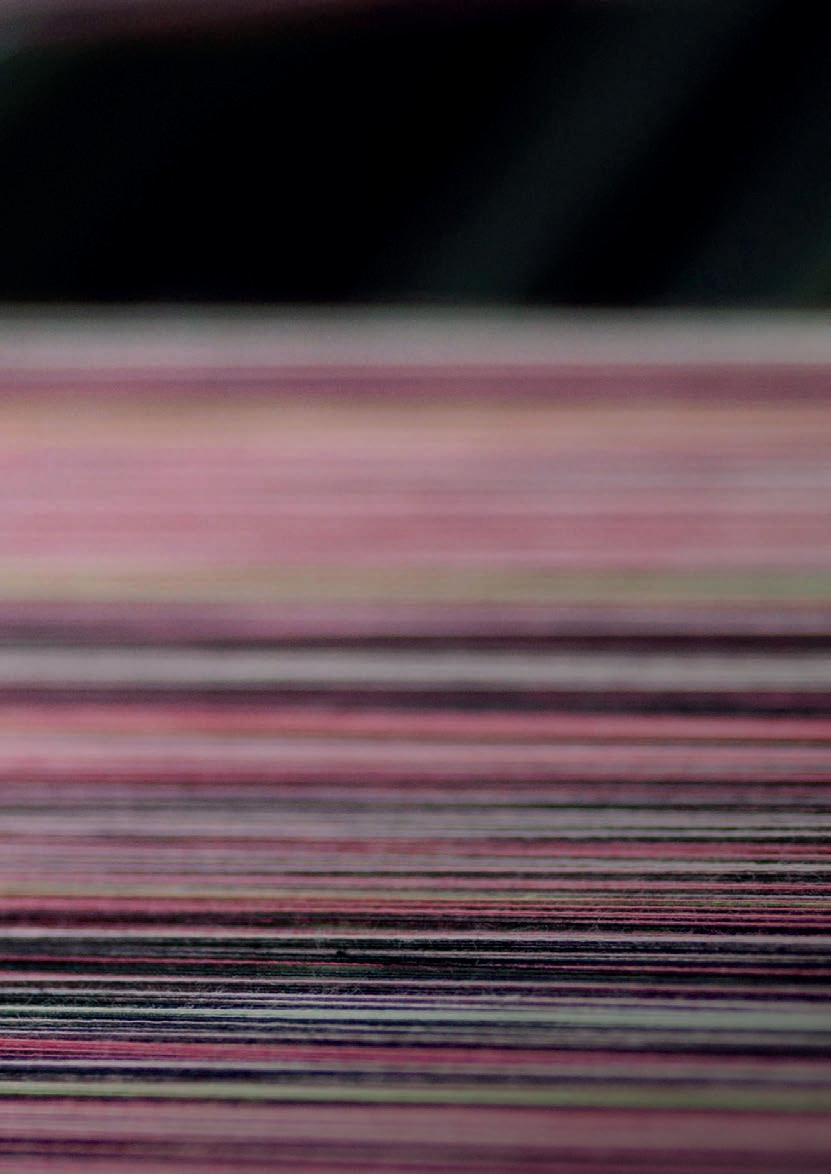
Showcase n. 173La Spola FAIRS “Normality” is easier than done INTERVIEWS Ercole Botto Poala Giovanni Marchi Fabrizio Tesi Claudio Lacchio IDEAS Alessio Berto’s visionary project CITIES Cherchez la crepe SHOWCASE


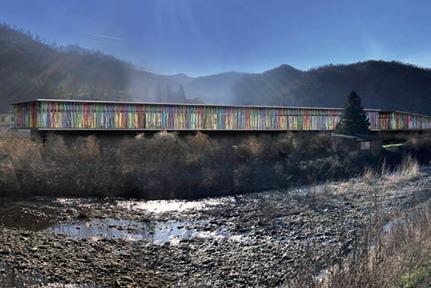

Interviews / Interviste 08
ERCOLE BOTTO POALA
Mister Fashion
Il tessile a Confindustria Moda 14 GIOVANNI MARCHI Unity is strenght Magnolab. L'unione fa la forza 20 FABRIZIO TESI
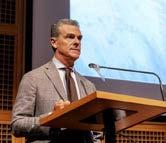
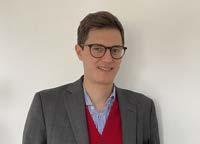
The lights of Astri Riflettori sul riciclato 28 CLAUDIO LACCHIO Wool revolution ANCL per la certificazione unica
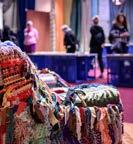
Ideas / Idee 32 ALESSIO BERTO

The eden of creativity L'eden della creatività
Fairs / Fiere 40
“Normality” is easier said than done Si fa presto a dire ripartenza
Redazionali / Focus 46
The jewel in the crown Filatura Alma. Fiori all'occhiello 49 Yesterday, today A Zeta fa rinascere un nome storico 50 Full speed ahead Fil-3, nuovi articoli, anche per l'arredamento 53 The future is already here Gruppo Colle lavora per una "nuova" sostenibilità 54 New frontiers
La tecnologia di Shima Seiki a Pitti Filati 57
On the customer's side Officine Gorgeri, dalla parte del cliente 58 Famas orbit
L'orbita Famas 61 Tradition and innovations Rifinizione Vignali, tradizione e innovazione 62 All for one Tessitura Italia, un futuro da grande azienda
Cities / Città 64 Cherchez la crepe Un piatto made in France
Foto: Dario Garofalo 14 8 28 40
registrati al portale per ricevere ogni giorno le notizie dal mondo del tessile abbigliamento

Editor in Chief Matteo Parigi Bini | Fashion EditorTeresa Favi, Marta Innocenti Ciulli | Economic Editor Matteo Grazzini
Editorial Staff Francesca Lombardi, Virginia Mammoli, Elisa Signorini | Layout Martina Alessi, Melania Branca
Translation Tessa Conticelli | Commercial Director Alex Vittorio Lana | Advertising Gianni Consorti Publisher Alex Vittorio Lana, Matteo Parigi Bini | via Cristoforo Landino, 2 - 50129 Firenze - Italy redazione@laspola.com
Baroni&GoriPrinting(Italy)
Questo periodico è associato alla Unione Stampa Periodica Italiana

SHOWCASE
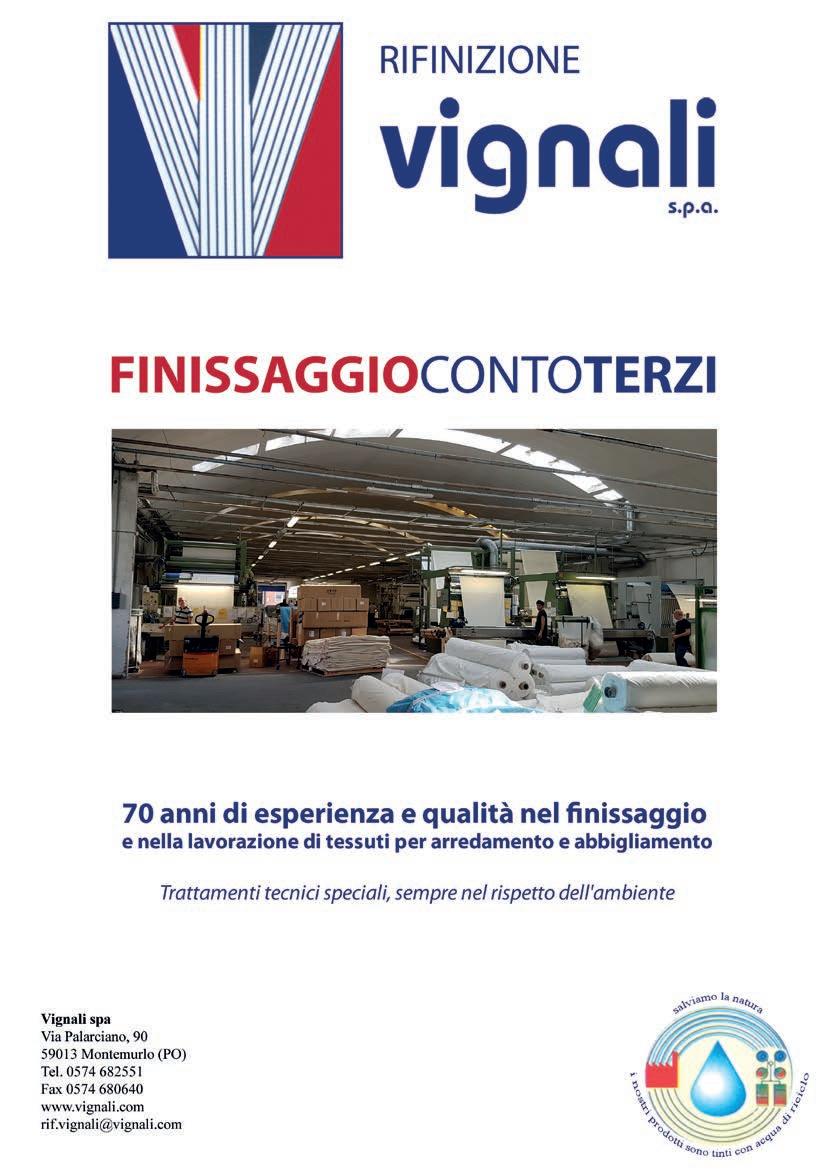
Three in a row
PRONTI PER IL TRIS
by Matteo Grazzini
Here is the first La Spola- Showcase issue of the year and, for once, we’d better mention our magazine’s release schedule, because in 2023 we will be publishing three issues: in addition to the usual two, this odd year brings the ITMA show too, after four years since the last Barcelona fair, which seems light-years away now, especially if we stop to think about all that’s happened (and has not happened) in between.
This season’s trade shows are marked by the appointment of Ercole Botto Poala as President of Confindustria Moda: who better than the former head of Milano Unica to tell us all about the market and trade show situation from his privileged view? There are, however, other associations, definitely smaller than Confindustria Moda, which have been fighting hard lately to change the image of the textile industry in terms of sustainability, environmental protection, rules and representativeness at the public level. We consulted two of them, which represent the upstream textile supply chain, and we realized how dedicated they are to making a difference.
Surely dedicated to the point of being utopian is Alessio Berto, who is so passionate and optimistic about the textile world that he has moulded materials and fabrics into an amazing capsule collection which will be shown at the Pitti Filati and Denim Première Vision shows. And here they are again, the trade shows: they are (nearly) back to their usual schedule, but with some new dates in Paris and Munich, which keep entrepreneurs and agents quite busy.

And, last but not least, are usual tips to get you through the trade show fatigue in Florence, Milan and Paris. This time we suggest alternating between sweet and savory or choosing one of the two options. We offer, in fact, a tour of the three cities’ best crêperies. Paris has a head start over the others, of course, but the last word has yet to be said.
Primo numero dell’anno per La Spola- Showcase e per una volta è bene specificare l’ordine del nostro magazine perché il 2023 ci vedrà impegnati su tre uscite redazionali: oltre alle due consuete infatti l’anno dispari porta anche ITMA, a distanza di quattro anni da Barcellona, un’edizione che sembra ad anni luce di distanza, soprattutto pensando a quello che c’è stato (e non stato) in mezzo.
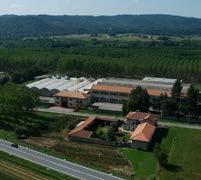
Per questo ritorno alle fiere abbiamo voluto celebrare la nomina a presidente di Confindustria Moda di Ercole Botto Poala: chi meglio dell’ex leader di Milano Unica può descriverci meglio la situazione di mercati e fiere dall’alto del suo osservatorio nazionale? Ma ci sono anche altre realtà, sicuramente più piccole di Confindustria Moda ma presenti sul territorio, che si stanno battendo per cambiare volto al settore tessile in termini di sostenibilità, tutela dell’ambiente, regole e rappresentatività davanti alle istituzioni.
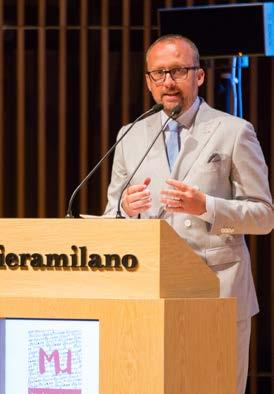
Ne abbiamo sentite un paio che rappresentano uno spaccato del “monte” della filiera e quello che emerge è un impegno praticamente quotidiano, quasi a livello di volontariato.
E volontariato creativo e quasi utopistico è quello di Alessio Berto, che per passione e fiducia nel mondo del tessile, si è messo a plasmare materiali e stoffe per creare una capsule tutta da descrivere e raccontare dopo averla mostrata a Pitti Filati e Denim Première Vision. Ecco, appunto, le fiere: tornano (quasi) alla loro routine, ma con novità sui calendari a Parigi e Monaco di Baviera che continuano ad animare le agende di imprenditori e agenti. Infine, come sempre, i consigli per mitigare la fatica dei giorni in fiera a Firenze, Milano e Parigi. Stavolta si tratta di alternare il dolce e il salato o di scegliere tra le due alternative. Proponiamo infatti un tour tra le migliori creperie delle tre città: Parigi parte in vantaggio per tradizione e creatività ma non è detta l’ultima parola.
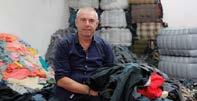
EDITORIAL 7 La Spola

Mister Fashion
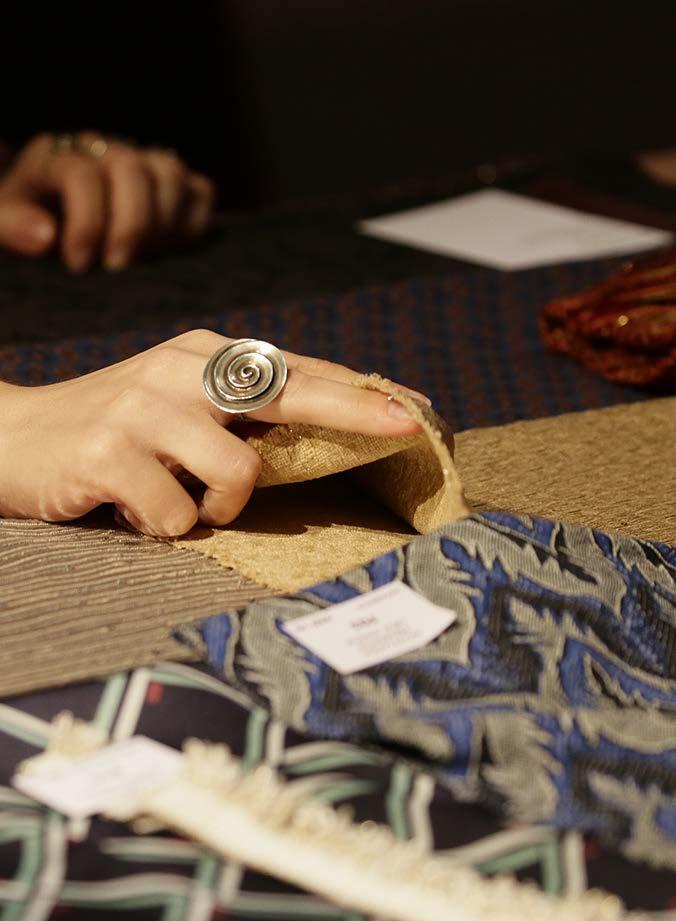 ERCOLE BOTTO POALA PORTA IL TESSILE AL VERTICE DI CONFINDUSTRIA MODA
by Matteo Grazzini
ERCOLE BOTTO POALA PORTA IL TESSILE AL VERTICE DI CONFINDUSTRIA MODA
by Matteo Grazzini
Jackets, eyewear and fabrics. Confindustria Moda is a reference point for the whole Italian industry and, in July 2022, Ercole Botto Poala was appointed at the head of the confederation following Claudio Marenzi and Cirillo Marcolin. 51 years old, MD of Reda, Botto Poala has also been the President of Milano Unica for nearly five years.
You are the first President of Confindustria Moda representing the fashion industry’s upstream supply chain. Do you see it as a recognition of the role played by the Italian textile industry?
Confindustria Moda was established as a federation to protect the supply chain that made the Italian Textile, Fashion and Accessory Industry great across the world. Our role is to safeguard and promote all that creative and technical know-how which, in Italy, produces wealth, culture and social growth. I would like to thank my predecessors who worked to promote the entire supply chain: from textiles to shoewear, from leather to goldsmithing, from furs to eyewear.
Supply chain: is it still intact after the pandemic or has Covid wiped out some links?
On the whole, it is still intact, although Covid and the rise in energy prices have caused many small and medium-sized companies to shut down. All in all, however, owing also to the close collaboration with public institutions, we have been able to provide public aid to the companies, such as extraordinary redundancy fund, which protected the workers and the know-how that has grown over the years.
The end of 2022 brought a new government: do you expect a change of strategy towards the fashion industry or will the work done so far be continued?
I hope for a policy in continuity with that of the Draghi Government, which was aware of the needs of Italy’s productive system and had plans for the country’s development. It is too soon to say, but it seems that the Meloni Government is going in this direction in many respects. I hope it will give Italy the political stability it needs, and also because, for us industrialists, it is quite difficult to make long-term plans if the government people we interact with change every year and a half.
What are Confindustria Moda’s top three priorities for 2023? Innovation, internationalization and training. Innovation as both investments in digitization processes that make companies more productive and competitive, and sustainability, in order to project them into the market of the future, making them more resilient and less susceptible of variations in the prices of raw materials and energy. Internationalization because it is crucial to keep this trend going and strengthen our presence in all markets: there is a huge demand for the “Made in Italy” and we need to be able to meet it. Training, because within 2026, we will need about 90 thousand professional figures, ranging from the more traditional, such as model makers, to the most innovative, like e-commerce and sustainability managers. We have to keep working on closing the mismatch between the labour market demand and the supply of the educational system, in order
INTERVIEW 10 La Spola
"Le priorità del mondo della moda per il 2023 sono innovazione, mercati esteri e formazione. C'è forte richiesta di made in Italy"

INTERVIEW 11 La Spola
Ercole Botto Poala
to reduce youth unemployment and allow companies to hire talented people who can lead the new stage of the Textile, Fashion and Accessory Industry. There is, however, a basic consideration that we have to keep in mind: our supply chain consists mostly of small and medium-sized companies which cannot face the future alone. It is only by speaking with one voice, as a system, that will be able to seize the chances coming our way and find concrete solutions to the complex problems we are faced with. And the reason why the seven major associations of the Textile, Fashion and Accessory Industry decided to confederate in the form of Confindustria Moda is exactly to create this synergy. How long will it take for the fashion industry to reconnect with the farthest markets, such as China, or with those more conditioned by the war, like Russia?

It is impossible to make forecasts right now. As far as China is concerned, it depends on the pandemic, but the situation there is very complex because of the vaccine, which seems less effective than ours. As for Russia, it depends on when and how the war will end. But the other foreign markets show significant dynamism, both within the EU and extra-EU, in particular, United States, Korea and Arab Emirates, which have reached double-figure growth trends, even higher than in the pre-pandemic period.
A jump back into the past: you were the man behind the choice of bringing the date of Milan Unica forward from September to July. Did you expect the appreciation you received and to be “imitated” by the whole European trade show system?
Milano Unica is a trade show conceived, planned and run by entrepreneurs coming from different districts. It is designed to meet the customers’ needs: we decided to bring the date forward because of their requests. The choice, quite daring at the beginning, proved to be so successful that other European trade shows followed in our wake: our choice was applauded and found widespread approval because we proved to be able to keep in step with the ongoing changes of the fashion world.

INTERVIEW 12 La Spola
Milano Unica

 ph. Dario Garofalo
ph. Dario Garofalo
Unity is strength
L’ESEMPIO, FINORA UNICO, DEL PROGETTO MAGNOLAB A BIELLA
 by redazione La Spola
by redazione La Spola
Eight companies, each with its own specific skills in the textile industry, united in the same goal: working together to grow together.
Magnolab is the name of the project that led to the creation of a totally innovative network of textile companies within the Biella district in 2022.
De Martini Bayart e Textifibra, De Martini, Marchi & Fildi, Filidea, Di.Vé, Pinter Caipo Italia, Maglificio Maggia and Tintoria
Finissaggio 2000 are the companies joining the project that led to the establishment of a physical network of pilot plants, installed in the Cerrione headquarters, which develop innovative products and processing techniques with fast experimentation cycles, according to a lean management model. The President is Giovanni Marchi, manager of Marchi & Fildi, a young spirit for a modern project.
MagnoLab is one year old. Can you already take stock of the situation?
We started off one year ago with many ideas and a lot of enthusiasm: MagnoLab is, in fact, a unique and innovative project without precedent. We have an international spirit and our main mission is to work together in a wellorganized way to develop innovation, research and sustainability and circular economy- related projects. It is a very ambitious plan. But I believe that this first year has already brought good results, first of all, the network’s consolidation and strengthening . At present, the MagnoLab network includes 8 companies and aspires to become a new point of reference for innovation in the textile industry which, as a whole, represents a turnover of € 200 million and over 1,000 employees.
Have you established contacts with similar networks in Italy or abroad?
One of MagnoLab’s first goals is to cooperate with the main players in the field, both at the international and national level: we are now in touch with subjects that deal with training and research. However, we have not found so far anything that can be compared with Magnolab. It is very challenging to be pioneers in this field, our goal is to bring together support to companies on training (with the collaboration of institutions such as Biella’s Città Studi and Its Tam), research and development to help them innovate and create skills for the talented people who will be the driving force behind innovation in the near future.
The entry of Pinter Caipo Italia added a touch of internationality, but can it extend to include other Italian districts or is it restricted to Biella-based companies?
Supply chains, in particular, supply chains as complex as the textile one, cannot be restricted within local boundaries. On the contrary,
Otto aziende, ognuna con competenze specifiche nella filiera tessile, unite con un solo obiettivo: collaborare per crescere insieme. Magnolab il nome del progetto che ha caratterizzato il 2022 del distretto di Biella creando una rete di imprese tessili del tutto innovativa. De Martini Bayart e Textifibra, De Martini, Marchi & Fildi, Filidea, Di.Vé, Pinter Caipo Italia, Maglificio Maggia, Tintoria Finissaggio 2000 le aziende di questa sinergia che ha portato a una rete fisica di impianti pilota, installati nella sede di Cerrione, che sviluppano prodotti e processi innovativi con cicli di sperimentazione rapidi, secondo un modello di lean management. Il presidente è Giovanni Marchi, direttore di Marchi & Fildi, spirito giovane per un progetto moderno. MagnoLab ha un anno di vita. E' già possibile fare un primo bilancio? Siamo partiti un anno fa con molte e idee e grande entusiasmo: MagnoLab, infatti, è un progetto unico e innovativo, di cui non esistono precedenti. Abbiamo uno spirito internazionale, che ha come mission primaria quella di collaborare in modo strutturato per sviluppare innovazione, ricerca e progetti legati alla sostenibilità e all’economia circolare. Ecco perché è una scommessa molto ambiziosa. Credo però che questo primo anno abbia portato già importanti risultati, primo fra tutti, l’ampliamento e il consolidamento della rete. Ad oggi sono 8 le aziende della rete MagnoLab, che ambisce ad essere un nuovo punto di riferimento per l’innovazione nel settore tessile che, complessivamente, rappresenta 200 milioni di fatturato e oltre 1.000 dipendenti. Sono stati presi contatti con realtà analoghe in Italia o all'estero? Uno dei primi obiettivi di MagnoLab è attivare collaborazioni e confronti con i principali interlocutori del settore a livello nazionale e internazionale: stiamo avviando dialoghi con soggetti che si occupano principalmente di formazione e ricerca. Ad oggi, però, nel nostro settore non abbiamo trovato un’esperienza analoga a quella di MagnoLab. E’ sfidante essere protagonisti di una realtà pioniera, il nostro obiettivo è far confluire in un unico luogo supporto al mondo della formazione (in collaborazione con enti quali Città Studi di Biella, l’ITS TAM e altri soggetti dedicati), ricerca e sviluppo per supportare le imprese che vogliono innovare e creare le competenze per i talenti che saranno i motori dell’innovazione in futuro.
L'ingresso di Pinter Caipo Italia ha dato una nota di internazionalità ma MagnoLab può allargarsi anche ad altri distretti italiani o è prettamente biellese?
Le filiere, soprattutto una filiera articolata come quella tessile, non
16 La Spola INTERVIEWS
Dopo un anno le aziende che fanno parte della rete sono salite ad otto, ma le porte sono ancora aperte
The fruit of innovation
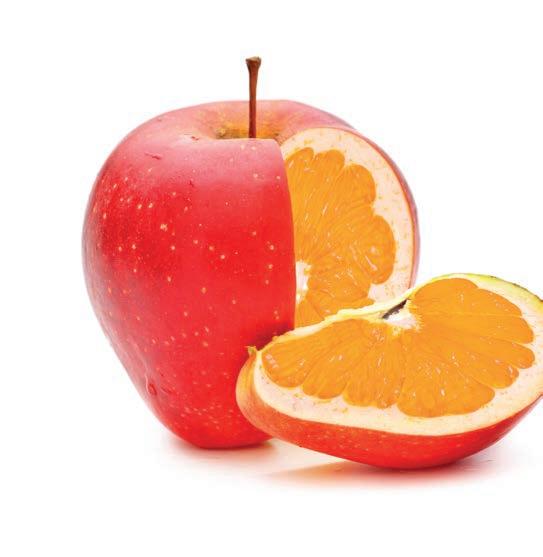
Fibre Blending Plants
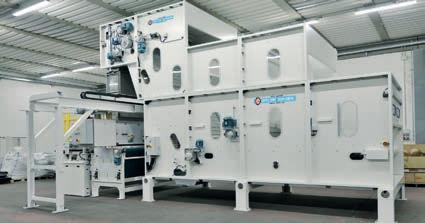
Sixty years of experience, business and technology have allowed us to make innovative machinery and systems, working closely together with the textile and other industries.
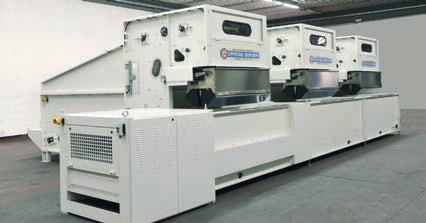
Our goal is to respond to the demands of new products (especially nonwoven fabric) with focused and innovative projects and using high technology.
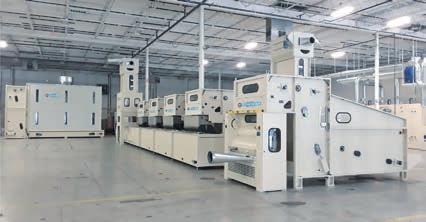
PRATESE, 11
VIA PROVINCIALE
51037 MONTALE (PT) ITALY TEL. +39 0574 718222 FAX +39 0574 710006 info@officinegorgeri.it www.officinegorgeri.it
by their very nature, they branch off in many directions, even at the international level. MagnoLab is open to collaboration in a place, which is not merely physical, devoted to innovation in the textile industry, by sharing goals, initiative and far-sightedness. We are open to new businesses, preferably from other districts, even international. What are the distinguishing features of MagnoLab in terms of research and development?
At the core of MagnoLab lies the fact that we are all physically in the same place, which allows the supply chain’s technicians to collaborate with us, making the development process faster and more successful. MagnoLab is not a vertically integrated company, but a group of companies working together, giving them the chance them to avail themselves of very specific skills in each stage of the production chain. The ownership of the plants belongs to the single partners, but whoever collaborates with MagnoLab has access to its equipment and skills as if they were property of the network itself.
Unity is strength, but how do you manage and harmonize a group of companies so different from one another, although all operating in the textile industry?
Pursuing the same goal is what brings our partners together and shows the direction that we need to follow. This “Pole Star” is a new and open-minded way of collaborating and being innovative within the textile industry, by maximizing the results that every single partner achieves and sharing both the problems and all the possible solutions.
possono essere ridotte ai confini territoriali, anzi, sono per loro natura ramificate in ampie catene del valore che spaziano anche a livello internazionale. Per questa ragione MagnoLab vuole essere una realtà aperta alla collaborazione in un luogo, non solo fisico, dedicato all’innovazione nel settore tessile, condividendo obiettivi, intraprendenza e lungimiranza. Siamo aperti a nuove realtà, meglio ancora se da altri distretti, anche internazionali. Quali sono gli elementi distintivi di MagnoLab a livello di ricerca e sviluppo?
Il cuore di MagnoLab è proprio il fatto di essere tutti fisicamente nello stesso luogo, elemento che permetterà ai tecnici della filiera di collaborare rendendo più veloce ed efficace il processo di sviluppo. Non è un’azienda verticalmente integrata ma tante aziende che collaborano; questo permetterà di avere competenze molto approfondite su ogni fase della catena produttiva. La proprietà degli impianti rimane dei singoli partner, ma chiunque collabori con MagnoLab può accedere alla disponibilità di macchinari e di competenze proprio come se fossero della rete stessa.
L'unione fa la forza. Ma come si gestisce e armonizza un gruppo di aziende così diverse da loro, sia pure tutte impegnate nel settore tessile?
Perseguire un obiettivo comune è l’elemento che unisce i partner della rete e indica la direzione verso cui muovere ogni attività. Questa “stella polare” è rappresentata da una nuova modalità collaborativa e aperta di fare innovazione in ottica di filiera, massimizzando i risultati che ogni singolo partner può ottenere e mettendo a fattor comune sia i problemi che le possibili soluzioni.

18 La Spola INTERVIEWS
Giovanni Marchi
Il segreto di MagnoLab è mettere a fattor comune sia i problemi che tutte le possibili soluzioni.
FILATI FANTASIA PER TESSITURA






















































I MOHAIR DI MISTER JOE




























































www.azetafilati.it | www.misterjoe.it

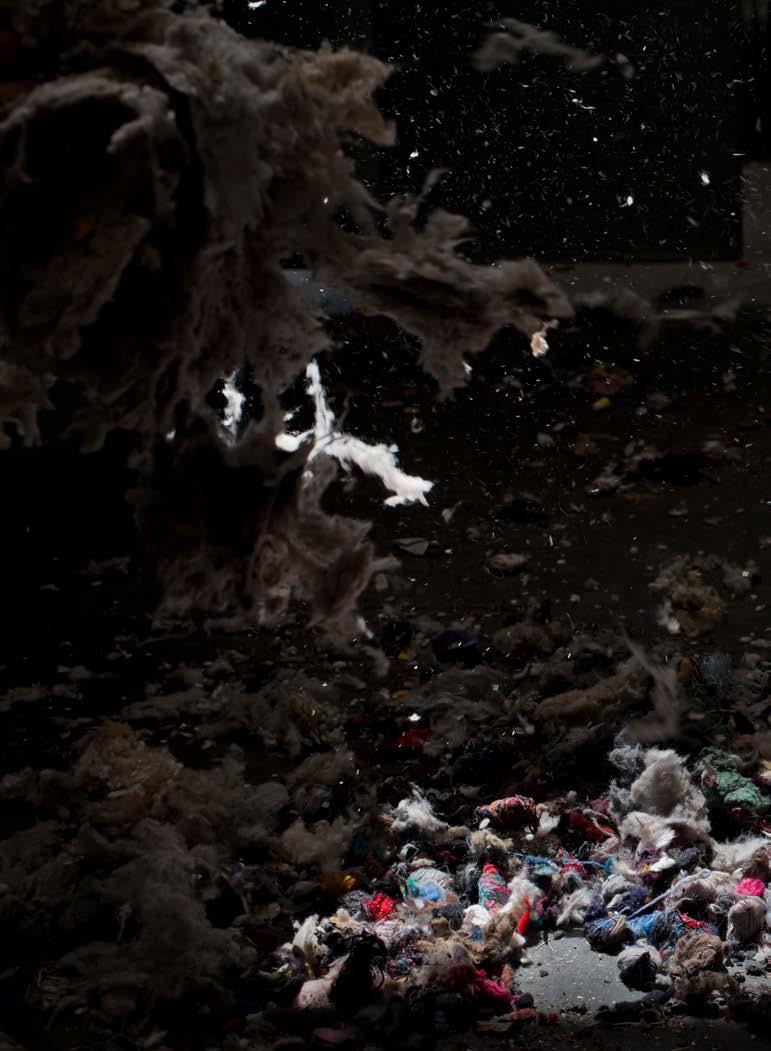 ph. Dario Garofalo
ph. Dario Garofalo
The lights of Astri
FABRIZIO TESI E IL RIFLETTORE ACCESO SUL TESSILE RICICLATO
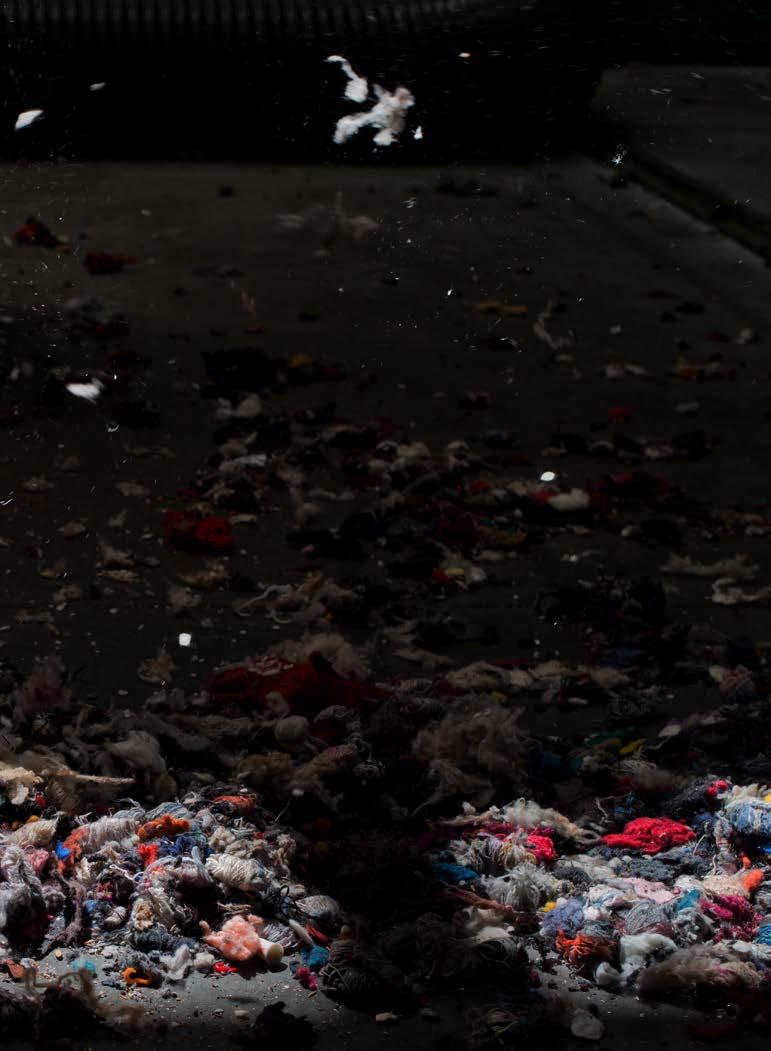 by Matteo Grazzini
by Matteo Grazzini
A spontaneous movement, a cultural association, a team of volunteers, a group of textile recycling experts. There is no one definition of Astri, but the acronym stands for Associazione Tessile Riciclato Italiana ( Italian Textile Recycling Association), according to the deed of foundation in 2017.
At the head of Astri since its establishment is Fabrizio Tesi, the owner of Comistra and an entrepreneur seriously committed to recycling and reuse. The association is the “tip of an iceberg” born out of the determination of six founding partners and then, after several years, extended to include no less than 204 members. A spotlight constantly shining on the Pratese district and its long-standing tradition of carded fabrics and recycling of garments to reuse fibers.
“When we started Astri, Prato recycled 143,000 tons of garments, but it seemed to be of interest only to a few people, as if there were no awareness of the district’s potential”, Tesi says to explain why they felt the need to join forces.
What were and are Astri’s priorities?
In August 2017, a set of regulations was approved, decreeing that any by-product was to be treated as waste, even textiles, which contrasted with our local age-old recycling tradition. We were born with a very clear mission: first of all, to provide lawmakers with information about what happens here in Prato, which has nothing to do with what, for instance, is done in other places, where people get actually paid to burn waste materials. Secondly, in order to give visibility to the district, which we did through the media attention that we rightly attracted. We are the first European textile district in terms of handling and sales and the first in the world in terms of recycling high-end textile products. Only textiles, in fact, unlike any other recyclable product, can be reused, which is a priority of the EU’s 2012 environmental guidelines, and ours is an upcycling of top-quality materials.
Why can Astri succeed where others have failed?
Prato’s entrepreneurs have always been known for being unwilling to join forces, not even when it is a matter of protecting common interests. We imposed a change of pace and we were able, probably for the first time, to join forces despite the differences between our over 200 members. We visited schools, we met with students here at Comistra, which serves also as headquarters for Astri, as well as with prominent politicians.
Are there similar associations in other European countries? There is something similar in Germany, but our superiority was recognized even by Orsola De Castro, the co-founder of the Fashion Revolution movement, which regards us as the world’s most import-
Movimento spontaneo, associazione culturale, gruppo di volontari, insieme di esperti di tessile riciclato. Impossibile definire Astri in modo univoco: l’acronimo è sicuramente quello dell’Associazione Tessile Riciclato Italiana, come da atto di fondazione nel 2017. Oggi, come allora, a guidare Astri è Fabrizio Tesi, titolare di Comistra e imprenditore attento alle tematiche del riciclo e del riuso, punta di un iceberg “nato” dalla caparbietà di sei soci fondatori e capace, a distanza di anni, di essersi ampliato a ben 204 associati. Un riflettore sempre acceso sul distretto pratese e sulla sua tradizione legata al cardato e al riciclo degli indumenti per recuperare le fibre.
“Quando abbiamo fondato Astri Prato riciclava 143.000 tonnellate di indumenti ma sembrava che questa cosa interessasse a pochi, che non ci fosse consapevolezza di questo valore del distretto” racconta Tesi spiegando come mai si è sentita la necessità di fare squadra. Quali erano, e sono, le priorità di Astri?
A darci una spinta in quell’agosto del 2017 è stata la normativa che considerava rifiuto ogni sottoprodotto, anche del tessile e che contrasta la nostra attività secolare di riciclo. Siamo nati con un mission ben precisa: la prima è dare informazioni ai legislatori su quello che viene fatto a Prato, che non ha niente a che vedere ad esempio con ciò che viene fatto altrove, dove c’è chi viene pagato per bruciare scarti o rifiuti. Poi dare visibilità al distretto, cosa fatta con l’attenzione mediatica che ci siamo meritati. Siamo il primo distretto tessile europeo per movimentazione e fatturato ed il primo nel mondo per quanto riguarda il riciclo di prodotti tessili di alto valore. Solo il tessile infatti, a differenza di qualsiasi altro prodotto recuperabile, ha il riuso, che le linee guida ambientali del 2012 dell’Unione e Europea danno come priorità ed il nostro è u upcyling di materiale pregiato.
Perché Astri può avere successo là dove in precedenza c’è stata poca fortuna?
Gli imprenditori di Prato si sono sempre distinti per il non fare squadra, neppure per tutelare gli interessi comuni. Con noi c’è stato un cambio di passo e forse per la prima volta siamo riusciti a fare squadra nonostante le divergenze tra più di duecento associati. Siamo andati nelle scuole, gli studenti sono venuti anche qui a Comistra, che funge anche da sede di Astri, così come i politici di rilievo.
Ci sono associazioni simili nel resto d’Europa?
C’è qualcosa di simile in Germania ma il nostro valore superiore ci è stato riconosciuto anche da Orsola De Castro, la co-fondatrice del movimento Fashion Revolution, che ci ritiene l’associazione più importante del mondo nel nostro campo.
Come si arriva a Bruxelles per tutelare i diritti delle
INTERVIEWS 22 La Spola
Per la prima volta siamo riusciti a fare squadra nonostante le divergenze tra più di duecento associati

ant association in the field.
How can your companies’ rights be safeguarded in Brussels?
In the past few years, our district has been going through a big downsizing phase, owing also to uncontrolled imports from the Far East, without the slightest respect for the most basic rules, including chemicals. We are forced to agree to the customers’ most preposterous requests, while the Chinese can flood the market with just any product at lower prices. We need to go lobbying in Brussels, something which is frowned upon in Italy, but performed by any group across the world to safeguard one’s interests. We need to sit down with influential people, as we did recently with Nathaniel Sponsler, President of Afirm, which gathers some of the world’s most important and influential fashion groups. And, of course, politics plays a very crucial role too.
There’s been a bit of tension with the local Pratese govermnent over the recycling hub issue.
We were very disappointed for not having been consulted when the idea of a recycling hub was first discussed, despite our expertise in the field. We disagree not with the plan itself but with how it was planned. The public institutions’ behavior was inappropriate.
Does Fabrizio Tesi have time to do his job as entrepreneur?
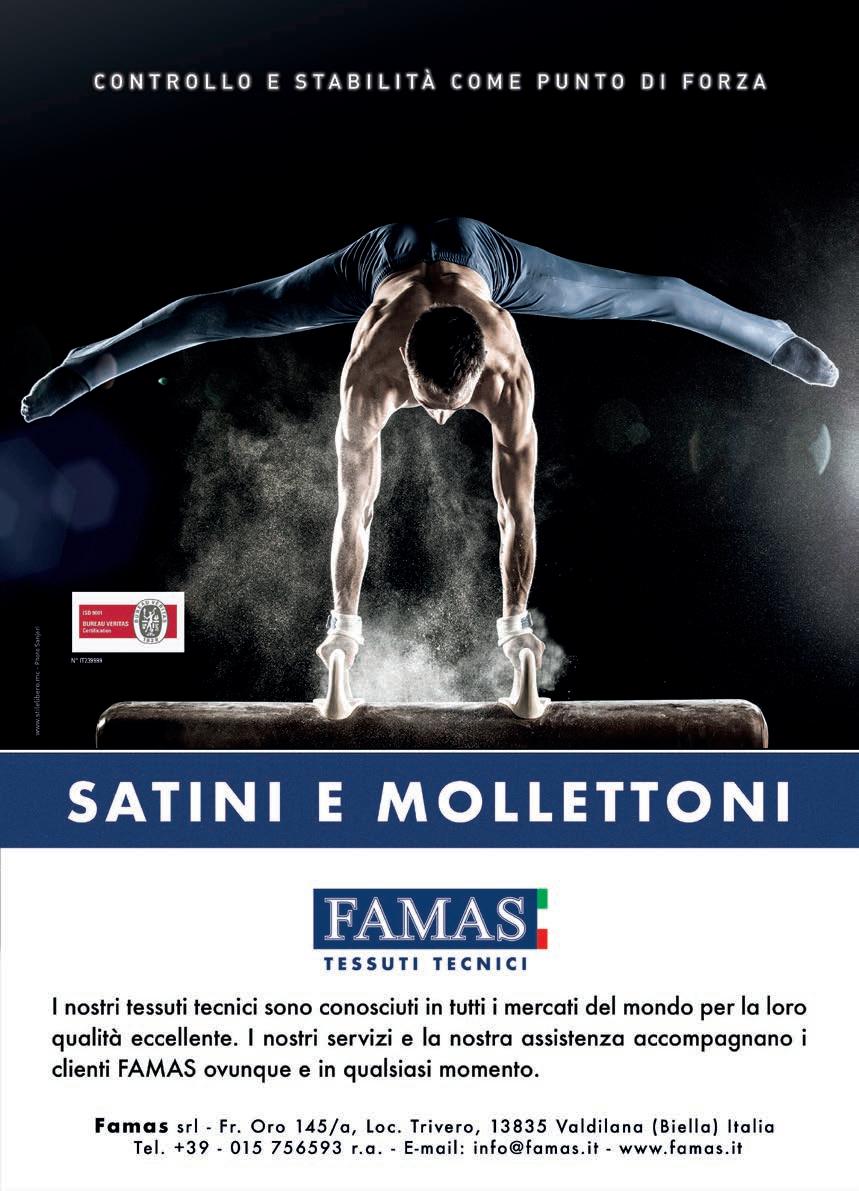
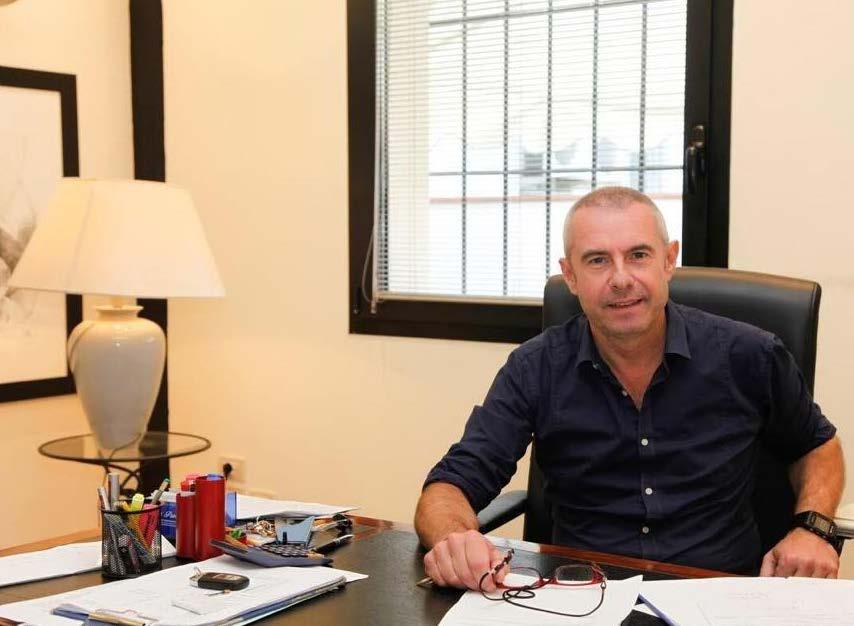
I devote at least two hours a day to Astri, it is tough but also rewarding, which is why I accepted a second term as president. The entrepreneur catches up over the weekend. Comistra has been focusing on trade shows lately by increasing its attendance following the excellent results in 2022, although we’ve had a slight setback in September because of the Far East’s post-pandemic recovery and the growing concern about energy costs. But I am confident in the district’s strength in the next future.
vostre aziende?
Veniamo da un distretto che negli ultimi anni ha avuto un grosso ridimensionamento anche a causa delle importazioni selvagge dal Far East senza il rispetto delle minime regole, anche per la chimica. Noi siamo costretti a firmare capitolati dei clienti anche con richieste assurde, mentre i cinesi hanno avuto la strada spianata nell’immettere di tutto sul mercato a prezzi più bassi. Per Bruxelles è necessaria un’operazione di lobby, che in Italia è quasi ritenuta illegale ma che invece è fatta da qualsiasi gruppo nel mondo per difendere i propri interessi. Dobbiamo sederci ai tavoli con persone importanti, come abbiamo fatto noi recentemente ospitando Nathaniel Sponsler, presidente di Afirm, che raccoglie alcuni dei gruppi di moda più importanti e influenti al mondo. Ed ovviamente anche la politica ha un ruolo determinante. Con le istituzioni pratesi c’è stato un po’ di contrasto sul tema dell’hub per il riciclo previsto per il prossimo futuro.
C’è stata amarezza per non essere stati interpellati nel momento in cui si è pensato ad un impianto del genere nonostante avessimo le massime competenze sul tema. Siamo stati critici non tanto sull’hub ed il centro di raccolta in sé ma per come è stato progettato; l’atteggiamento delle istituzioni è stato sbagliato. Fabrizio Tesi ha anche il tempo di fare l’imprenditore? Dedico ad Astri almeno due ore al giorno, è un sacrificio ma anche una soddisfazione e con questo spirito di volontà ho accettato il secondo mandato da presidente. L’imprenditore recupera anche nel fine settimana. Come Comistra stiamo puntando sulle fiere incrementando la presenza dopo un 2022 ottimo, anche se a settembre i numeri sono un po’ calati per la ripresa del Far East dopo la pandemia e la preoccupazione per i costi dell’energia. Ma sono fiducioso sulla tenuta del distretto nei prossimi anni.
INTERVIEWS 24 La Spola
Fabrizio Tesi

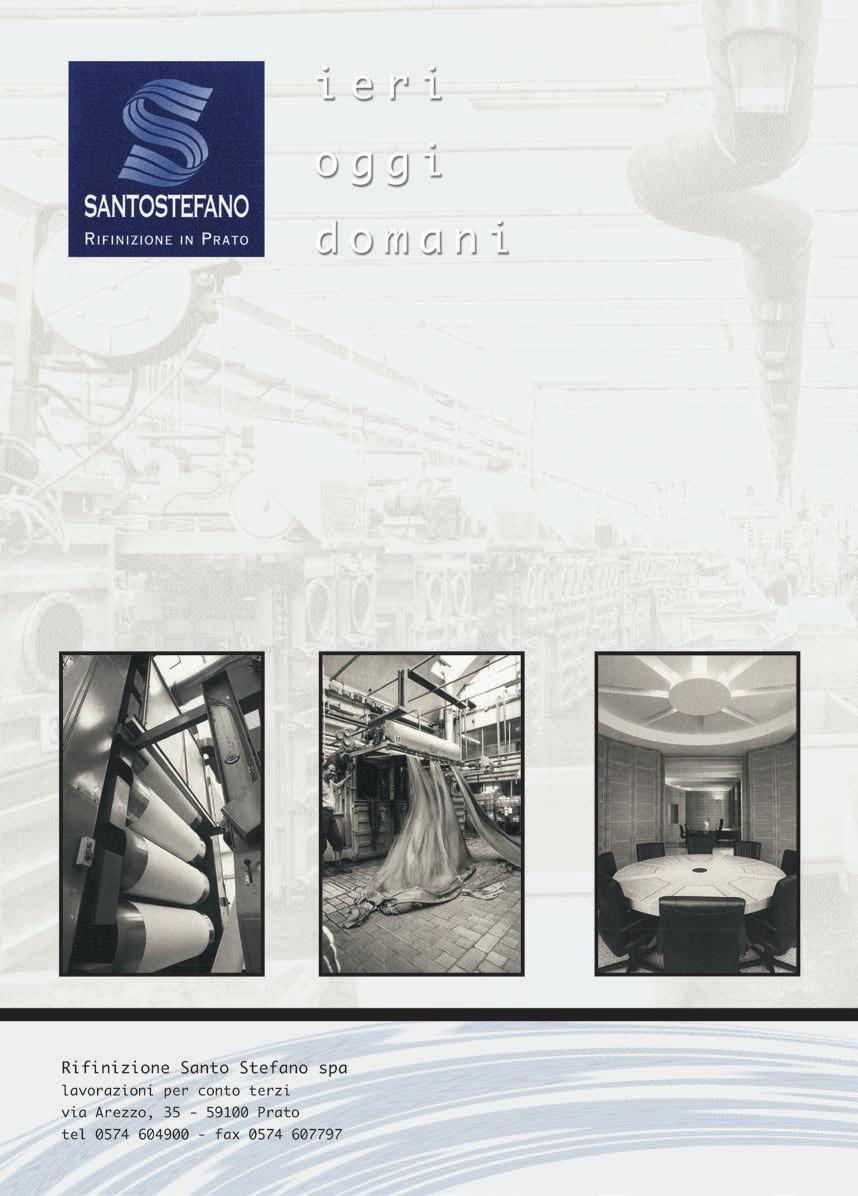
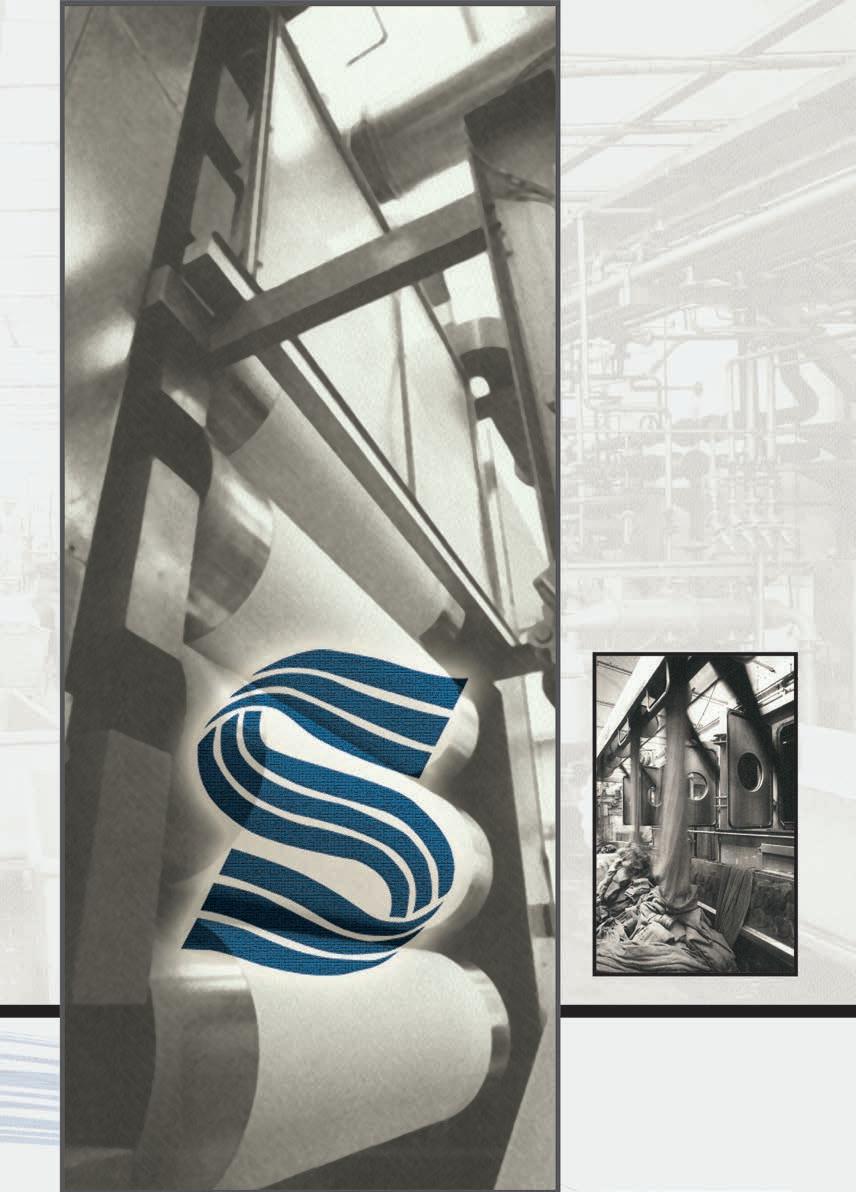


Wool Revolution
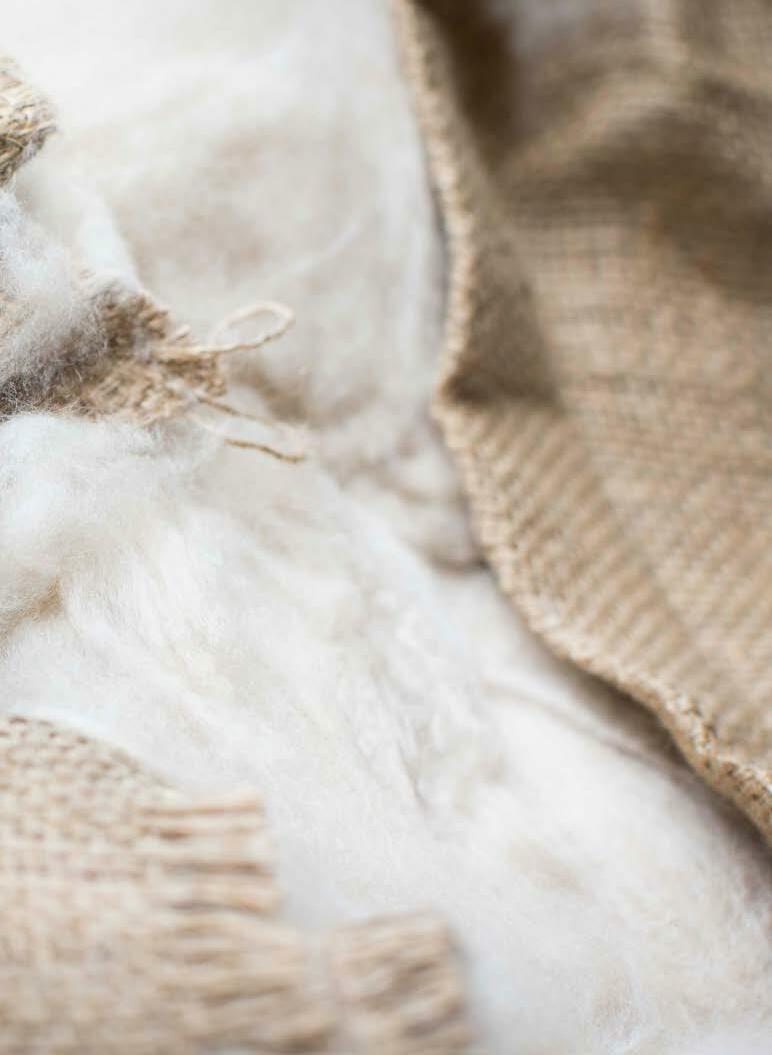
CERTIFICAZIONE UNICA: L’ANCL CI CREDE
by Matteo Grazzini
The seed was planted in Biella, over one hundred years ago: “Associazione Biellese rappresentanti e commercianti materie tessili” was the name of the association which, years later and with broader horizons, would become the current “Associazione Nazionale del Commercio Laniero”.
With wool as the common thread, literally, over the years the association has changed its name, members, articles and even goals, developing a more international scope, in addition to its locally-based objectives, up to its latest plans described by President Claudio Lacchio.
What is the association’s role today?
After the wide-ranging activity of the first wool association, which dealt with the whole supply chain, from raw material producers to garment makers, the association’s scope was reduced over time to cover only trade and agencies consisting mostly of Italians, thus, its importance was diminished. Then, in the past few years, with the issues of traceability and sustainability becoming more and more prevalent and recurring, we felt a bit restricted within our role and wished to see it extended by re-establishing the old wool association and modifying its articles to include new members, even downstream suppliers, such as spinners, weavers, wool mills and dyers, in order to move ahead more united and stronger and, alongside Sistema Moda Italia and Confindustria, deal with the issues that fall within our competence, besides simplifying and streamlining the jungle of certifying associations and certifications. And in all this you cannot, of course, ignore the market’s leading brands.
They dictate the rules, sometimes by being excessively focused on the concept of sustainability borrowed from the food business, but we need to put some order here. We are working on how to do so. If, as it appears, the industry will join our association, we would like to be given a sort of delegation regarding natural animal raw materials, because we should all do our job and our job is not to deal with synthetic and cotton materials.
And once you have been given the delegation?
We see the delegation as a recognition of our competence. We would be able to tackle the sustainability and traceability issues on both sides: with the raw material producing countries on one side, and with the brands’ end customers, not necessarily luxury brands, on the other. Our goal is to be able, one day, to have one single sustainability standard set by the textile industry and not by the many private associations operating in the market today, a global standard establishing that wool is a sustainable, traceable and recognizable fiber, without being asked for a different certification every time and without having to deal with bureaucratic red tape and costs which have become unbearable. We do not want to be the umpteenth certifying association in the market, we want to represent Italy providing a global standard for the wool industry.
Il seme fu gettato a Biella, più di cento anni fa: “Associazione Biellese rappresentanti e commercianti materie tessili” la prima denominazione di quella che poi, negli anni e con orizzonti più allargati, è diventata l’attuale “Associazione Nazionale del Commercio Laniero”.
corso degli anni l’associazione ha cambiato nome, composizione, statuto ed anche obiettivi, aggiungendo a quelli locali della attualissimi progetti, raccontati dal presidente, Claudio Lacchio.
Qual è il ruolo dell’associazione oggi? Dopo i fasti della corporazione laniera che si occupava di tutta l’attività si è nel tempo ridotta al commercio e alla rappresentanza composta quasi soltanto da italiani e quindi l’impordelle tematiche dominanti e ricorrenti della tracciabilità e dellati e l’idea è stata quella di ricostituire la vecchia “Laniera”
tintoria per fare in modo di portare avanti più uniti e coesi,
In tutto questo non si può prescindere dai brand leader del mercato. sostenibilità mutuato in primis dal settore food, ma è necessario mettere un po’ d’ordine. Sul come ci stiamo lavorando. Nel momento in cui l’industria dovesse, come sembra, rientrare nella nostra associazione vorremmo farci dare una sorta di delega sulle materie prime naturali animali, perché ognuno deve fare il proprio mestiere e non ci occupiamo delle sintetiche o di cotone. E una volta ottenuta la delega?
parte con i paesi produttori della materia prima e dall’altra conbiettivo è quello di avere, un giorno, un unico protocollo di sostenibilità detenuto dall’industria e non dai vari marchi privati
senza dover andare ai tavoli dei clienti e sentirsi chiedere ogni lungaggini che sono ormai insostenibili. Non vogliamo essere -
INTERVIEWS 30 La Spola
There are foreign companies among our members: British, German, Turkish, Swiss and even Chinese. But Italy is the only European country where the textile industry can still count on a complete supply chain. So, although not officially, a request launched by Italy is a request launched by Europe. This whole plan should then end up on the table of the International Wool Textile Organization, but I don’t see how any other European country could raise an objection.
With what raw material producing countries do you have business relations?
With all the wool producing countries of the southern hemisphere, from South Africa to New Zealand, Australia, Argentina and South America and, when it comes to other fibers such as cashmere, with China, Mongolia, Peru for alpaca, and South Africa for mohair and silk. In some of these countries there are sustainability standards, such as the Australian Sustainawool recognized by South Africa, which are already in place and can be used to standardize some productions.
Someone might object that RWS, for instance, has been doing exactly this job.
They’ve been good at this, but they are not experts in the field and they just made things more complicated and bureaucratic. It’s a money machine.
Aren’t you afraid of the other associations lobbying against you?
Three of our members have their own association, but our idea is to stick together under one roof and above the parties.
talia che porta il mondo laniero verso una situazione univoca per tutti.
“Essere l’Italia” presuppone rapporti con l’estero e con realtà analoghe.
Ci sono già al nostro interno aziende straniere tra inglesi, tedeschi, turchi, svizzeri e anche cinesi. Ma l’Italia è l’unico paese europeo dove il tessile ha ancora un senso, una dimensione e istanza portata avanti dall’Italia è un’istanza portata avanti -
ti all’International Wool Textile Organization ma non vedo come gli altri paesi europei potrebbero avanzare obiezioni. Con quali paesi produttori avete rapporti commerciali?

Con tutta la parte lana dell’emisfero australe, dal Sudafrica alla Nuova Zelanda, all’Australia, all’Argentina e tutto il sud America, e se estendiamo il discorso alle
il mohair o la seta il Sudafrica. In alcuni di questi paesi ci sono protocolli, come ad esempio l’australiano Sustainawool riconosciuto dal Sudafrica, già attivi ed utilizzabili per uniformare alcune produzioni.
Un’obiezione: ci sono marchi, come RWS, che ha già fatto questo lavoro.
Sono stati bravi ma è gente non del mestiere che ha complicato la questione e l’hanno portata su un piano che non compete loro e che è troppo burocratizzato. Ed è una macchina da soldi. Non temete le “lobby” dei vari marchi?
Tra i nostri soci in tre hanno già un marchio a loro uso e consumo ma noi proponiamo una cosa trasversale e sopra le parti.
INTERVIEWS 31 La Spola
Claudio Lacchio
“ Representing Italy” requires relations with foreign countries and the like.
"In alcuni paesi ci sono protocolli già attivi ed utilizzabili per uniformare le produzioni"

The Eden of Creativity
IL VISIONARIO PROGETTO DI ALESSIO BERTO
by La Spola

Experimentation, creativity, courage, inspiration drawn from populations such as Inuit, Hopi and Dogon, and the determination to create a virtuous network of companies, private individuals, schools, associations and public bodies all supporting the same idea. And if this group of forty supporters includes NASA, that idea is likely to succeed.
Those attending the Pitti Filati show last summer and the Denim PV show in Milan in November cannot have failed to notice Indigo Eden, the space-installation-showcase-workshop, all in one, by Alessio Berto, pattern designer and teacher at the European Institute of Design and Naba, but also a debate facilitator and denim expert.
Futuristic lines, innovative materials, a capsule collection attracting attention and arousing interest and questions. The first question is obvious: why and how was Indigo Eden born?
I first came up with the idea about five years ago, by talking with a technological denim company at a testing laboratory. I had a capsule collection in mind, designed only to show the potential of this kind of denim, not for selling. In the beginning, the idea was not concretized, because it was not the right time. And then Covid hit and I shelved the project. But the name has a prophetic ring to it. Had we gone through with the plan before Covid, we would have anticipated many themes revolving around sustainability, processing techniques, research into materials. I am passionate about ancient cultures and religions and the idea was “ let’s bring the gods back down to earth” in order to save fashion. The name combines contradictory words: indigo, or denim, which has an extremely high environmental impact, and Eden, the place the just come from.
The project, however, partly changed after Covid. In 2021, inspired by a Pentagon’s video showing technologies never seen before, I introduced some technical fabrics and left only one denim outfit. I researched into fabrics having sustainability and indestructibility features and I found a nylon fiber with Dyneema molecules that is seven times stronger than steel, a wadding material for heat regulation made with hemp and silk waste, vegetable rubber for an outfit that many believed to be impossible to make and is, instead, the most beautiful piece of the collection. Then nylon with graphene. which is heat, water and fire-resistant and, last but not least, Pure Denim denim, 100% clean because it is made by using a technique, Smart Indigo, which removes the hydrosulfites through an electrolysis process and by using caustic soda that dissolves synthetic indigo in water and produces oxygen. The thread is reinforced before the weaving process in a natural way, by using pectin, the white layer below orange peel. And the fabric is cleaned by using only 250 liters of water thanks to ultrasounds with microscopic oxygen bubbles. And there is not only clothing.
I also designed gloves and eyewear, which was made by one of my students by using PLA, a compostable plastic derived by potatoes and corn and printed with a 3D printer. The zippers are not galvanized, but made with recycled metal, and the polyester is recycled too. They are not colored in order to avoid chemicals. My concept of sustainability, however,
Sperimentazione, fantasia, coraggio, l’ispirazione tratta da popolazioni come gli Inuit, gli Hopi e i Dogon e la volontà di creare una rete virtuosa di aziende, privati, scuole, associazioni ed enti a supporto di un’idea. E se tra
a novembre non può non aver notato Indigo Eden, lo spazio-installazionevetrina-laboratorio tutto in uno di Alessio Berto, pattern designer e docente ed esperto di denim.
Linee futuristiche, materiali innovativi, una capsule che attira sguardi e curiosità e suscita interesse e domande. La prima, quasi ovvia, è: perché e come nasce Indigo Eden.
E’ un’idea di circa cinque anni fa, nata parlando con un’azienda di decreata non per la vendita ma per mostrare le potenzialità di questo tipo di
Però il nome scelto dà un senso di profezia. L’avessimo fatta prima del Covid avremmo anticipato molti temi di sostenibilità, tipologie di lavorazione, ricerca dei materiali. Io sono appassionato di gli dei” per far evolvere la moda ed il nome è la contrapposizione tra l’indigo, quale vengono i giusti. Nel post Covid però il progetto è in parte cambiato.ciaio, un’ovatta per la termoregolazione fatta di canapa e seta da scarti bolle di ossigeno. Non ci sono solo gli abiti.
stampati con la stampante 3D. Le zip non sono galvanizzate ma realizzate -
34 La Spola IDEAS
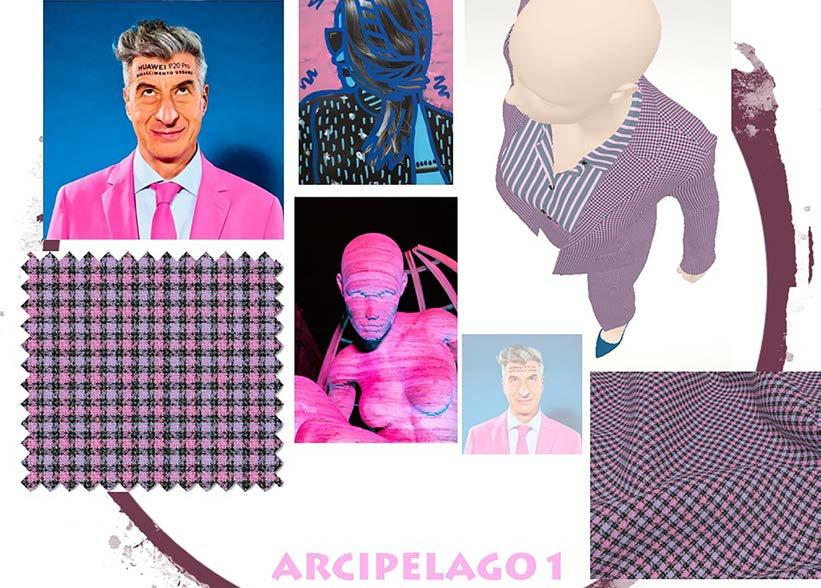
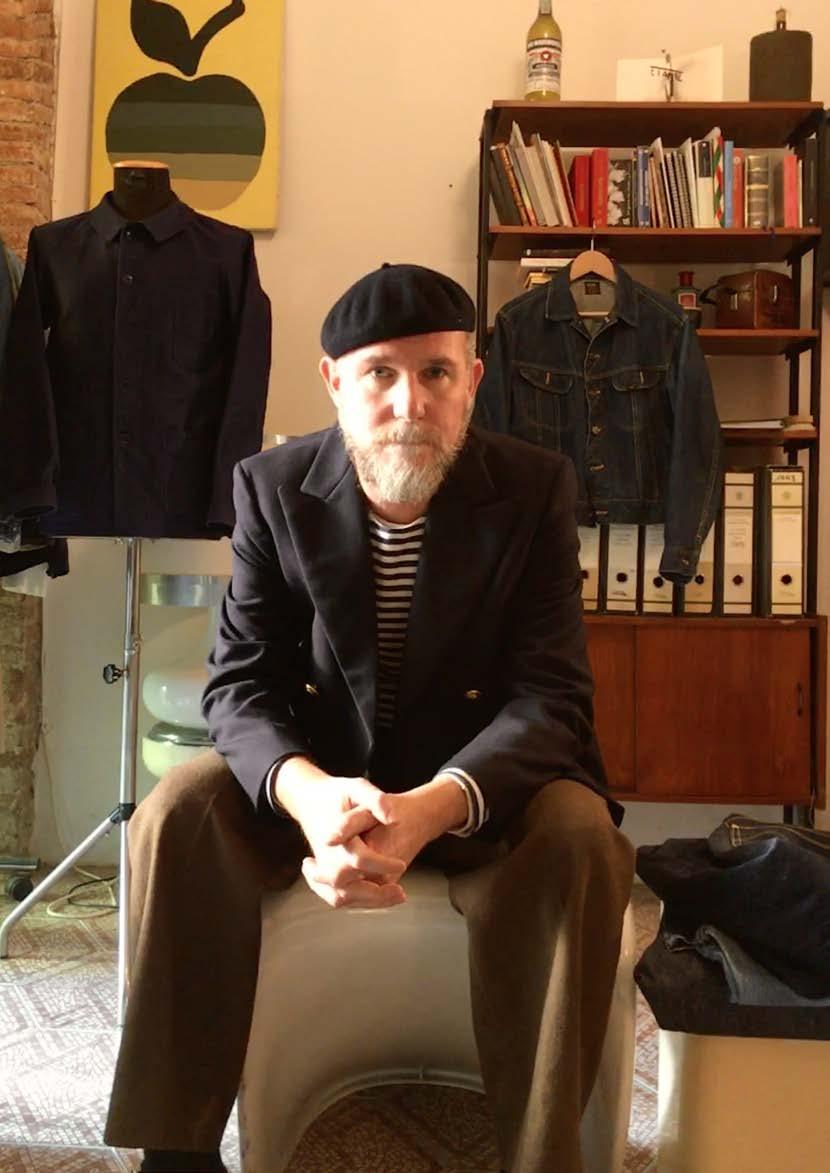 Alessio Berto
Alessio Berto
includes the use of chemicals, which are necessary at times, but only to make indestructible material and use them only once. Shoes are made with Neoprene and vegetable glue.
Each garment on show has a bag attached with some seeds. It is my message for the future. I once read a UN report showing that in the 1990s, thousands of Indian children survived famine by eating macerated Moringa leaves, a plant with amazing nutritional properties. I looked for and found seeds with antibacterial and antiviral properties and attached them to the tags to send out a message of hope for a future without starvation, illnesses and famine.
At what point did NASA arrive?
When I needed to make a video to show these gods coming back down to Earth to save fashion, I wrote to NASA asking for images collected by satellites. They wrote back and forwarded it all to the European Space Agency, which expressed interest in the project and granted me permission to use the images. But the most beautiful thing about the project are the photos, which illustrate very well the images of these gods that are either giants as in the Bible or tiny as in Native American legends from which the denim draws inspiration. And one of my students found the right futuristic solution.
Are all the pieces on display at the show one-of-a-kind?
Yes, they are all one shot. We did not make any prototypes and it took eight months of research and reuse of materials transferred from one garment to another to make them. If a brand is interested in reproducing one of these garments to sell it, I provide the paper patterns and the list of suppliers of the materials. Everything is realizable, I drew inspiration from clothing of the past, but no piece of the collection is a mere exercise in style or an end in itself, and this because of my working method, made up of organization, optimization and efficiency, ever since I worked as an employee.

indistruttibile e usarla una volta sola. Le scarpe sono in neoprene unito con colla vegetale. Attaccati ai capi esposti ci sono dei sacchetti con dei semi.
un potere nutrizionale incredibile. Ho cercato e trovato i semi con proprietà speranza per un mondo futuro senza fame, malattie e carestie. In che momento è arrivata la Nasa?-
Bibbia o minuscoli come nelle mitologie degli indiani d’America a cui è ispirato il denim. Ed è stato uno dei miei studenti da aver trovato la soluzione futuristica ed adatta.
ulteriori?
di otto mesi di ricerca, di riutilizzo di materiali passati da un capo all’altro. io cedo i cartamodelli e gli passo la lista dei fornitori dei materiali. E’ tutto realizzabile, c’è ispirazione in abiti del passato, non c’è nessuna esagera-
da quando ero dipendente.
36 La Spola IDEAS

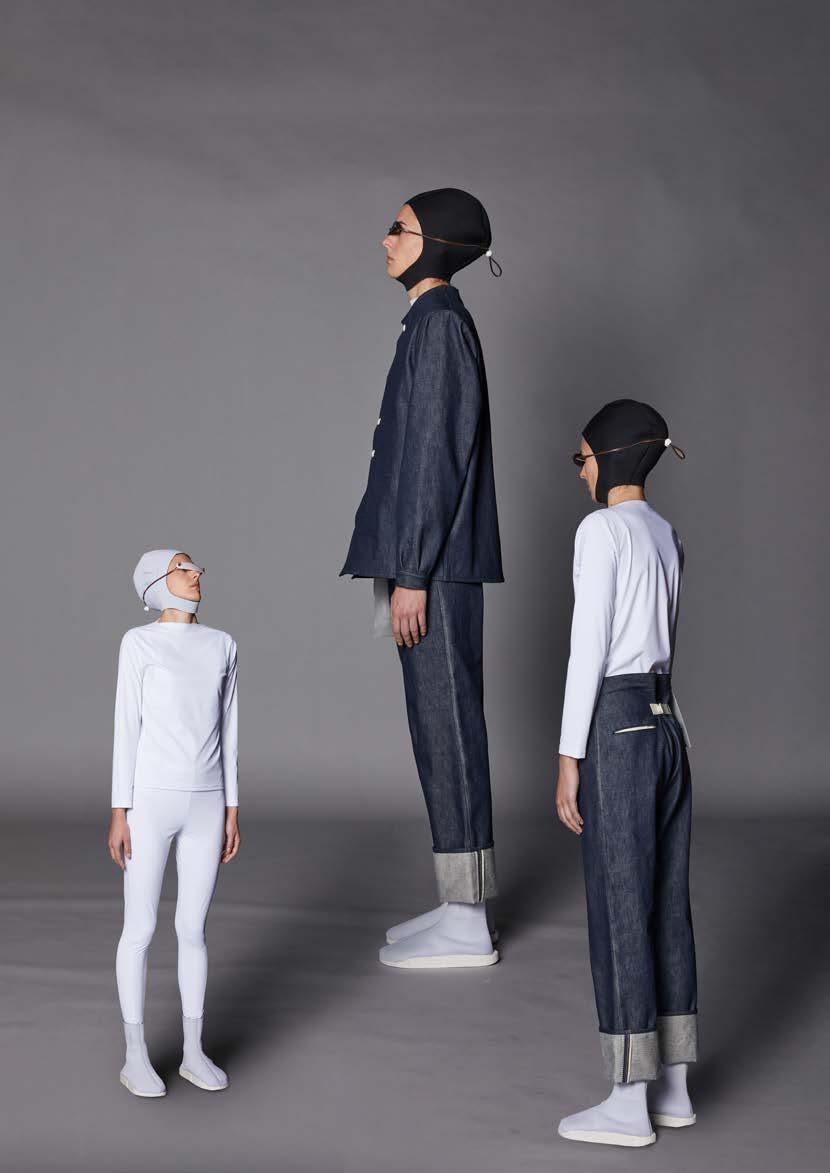
MILANO UNICA 31 gennaio - 1.2 febbraio 2023 a Rho Fiera Milano Collezioni tessili e accessori per abbigliamento Primavera/Estate 2024 — milanounica.it
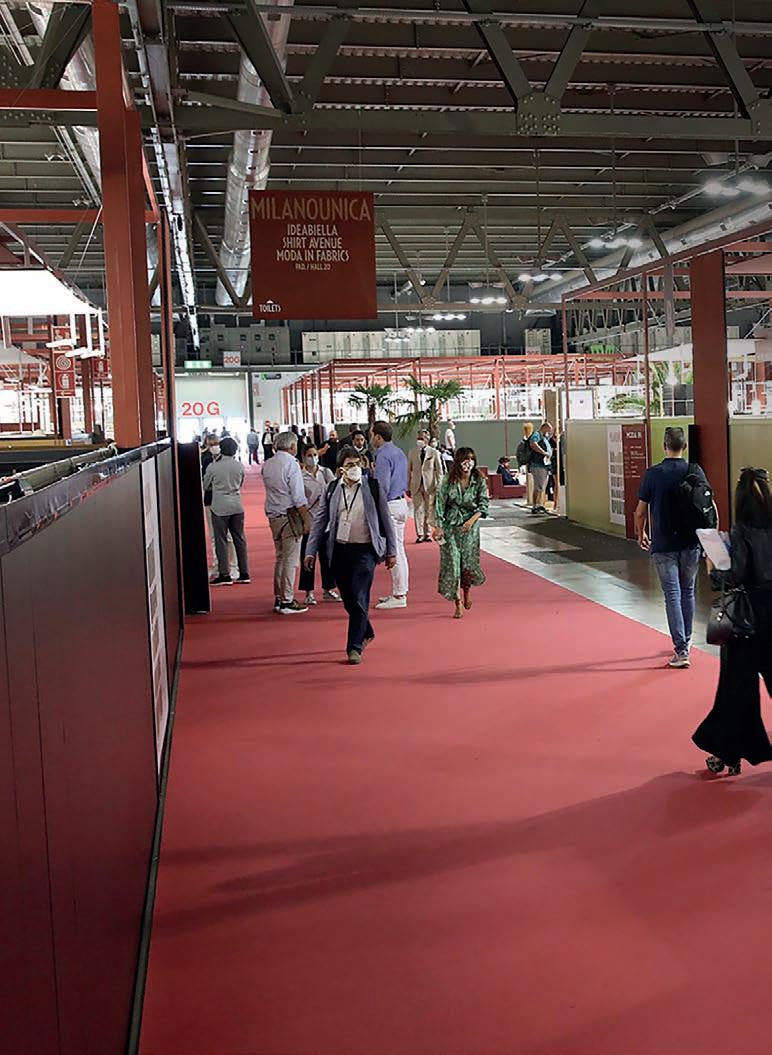
“Normality” is easier said than done
SI FA PRESTO A DIRE “NORMALITÀ”
by Matteo Grazzini
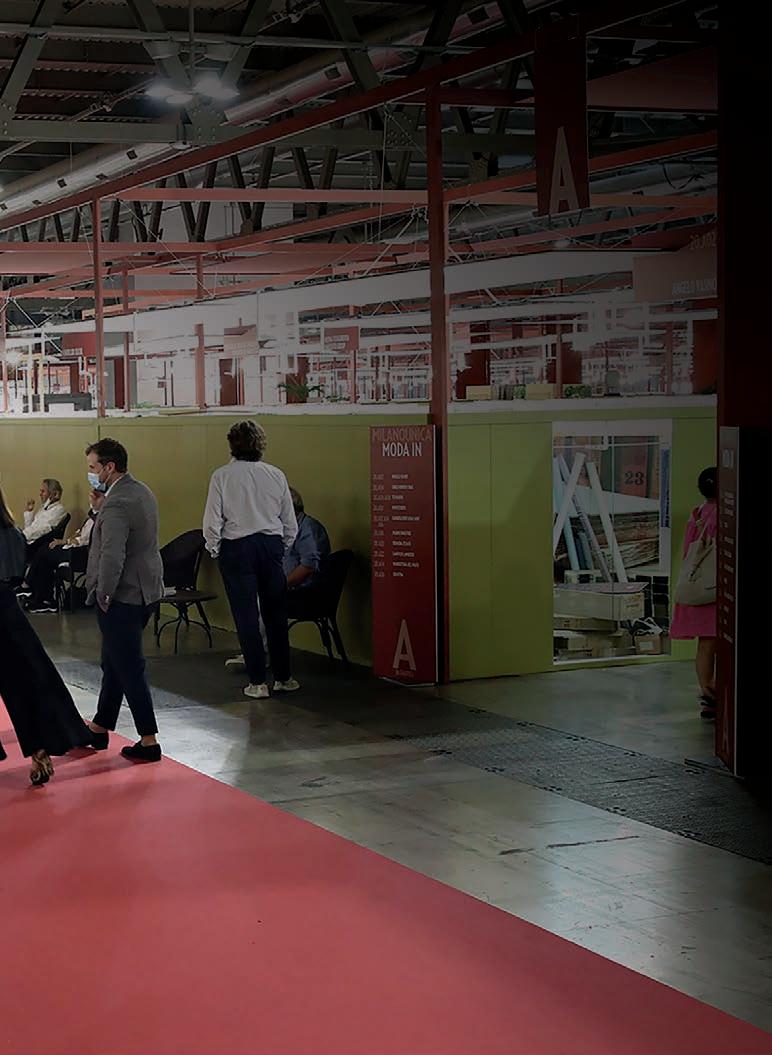 Milano Unica
Milano Unica
The return to “normality” for the trade show season may actually come in this early 2023, supposing that the rollercoaster of events and dates constantly changing in the past few years, even before the arrival of the pandemic, can be described as “normal”. 2023 kicked off with Heimtextil, which brought the Frankfurt show back to its usual schedule, in January, after a summer “ digression” when it was held concurrently with Techtextil and Texprocess to make up for the time lost due to Covid. Even the London Textile Fair went back to its usual schedule, in January, held at the same time as Heimtextil, and a month after the second Texpremium show: same location, same organizers but different target. What has not changed is the release date of the first La Spola – Showcase issue of the year which, as usual, debuts at Pitti Filati, in a well-oiled context, especially after having moved back to Fortezza da Basso, with larger spaces as compared to Stazione Leopolda which, however, met with approval because of its more “intimate” atmosphere. The popular yarn and knitwear show is in its 92nd edition and the chance to go back to being “ single” after the forced cohabitation with Pitti Uomo and Pitti Bimbo gives the show greater visibility. Pitti Filati showcases the collections of the major Italian and international yarn manufacturing companies, with the latest trends being described at the new Research Space curated by Angelo Figus and Nicola Miller and the new developments introduced at the special Fashion at Work, Knitclub and CustomEasy spaces. The stars of the show are the spring/summer 2024 yarn trends, with over 100 companies attending the fair. Held nearly simultaneously with Pitti Filati is Munich Fabric Start (January 24-26), a trade show which has reshuffled the cards for the summer season, for even in Bavaria, starting from this year, the MFS, Bluezone, Keyhouse and The Source shows will be held in the second half of July, whereas View Premium Selection has been brought forward to September and becomes “reView” and then “preview” again in November. The Source, instead, will be held once a year at the same time as the summer Munich Fabric Start and Bluezone shows. The new additional “The Source-Studio” format will be held in January at the MOC.
Seven days later, that is, from January 31 to February 2, the spotlight shines on Milano Unica, which is confident of the good results achieved with the past few shows and increasingly oriented toward regaining its international reach. The trade show
pandemia.
FAIRS 42 La Spola
-
-----
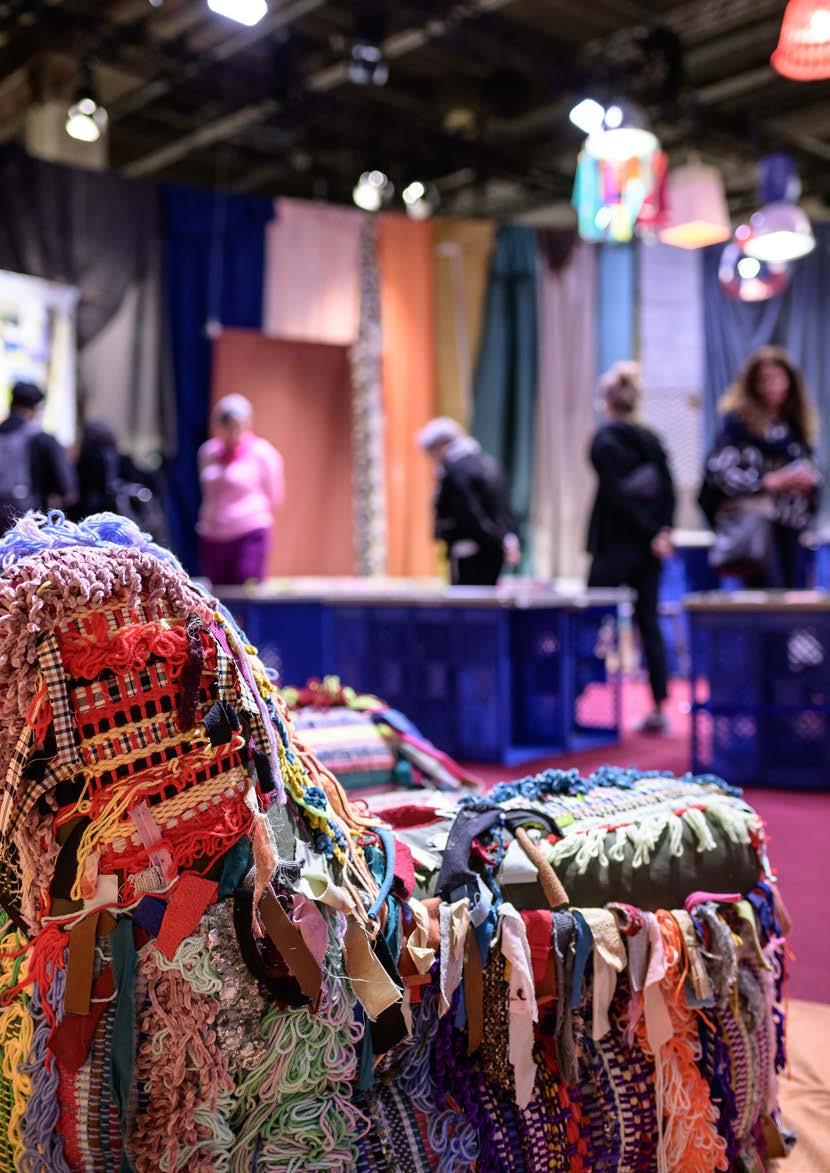
opens the doors of the Rho exhibition center where, in June, ITMA will be held and the two shows will definitely communicate at a distance and have a strong pull on each other.

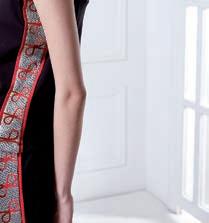
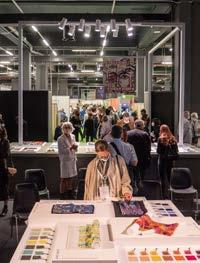
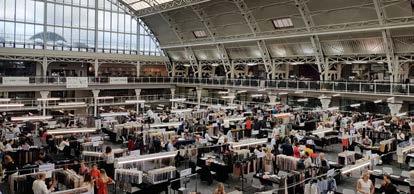
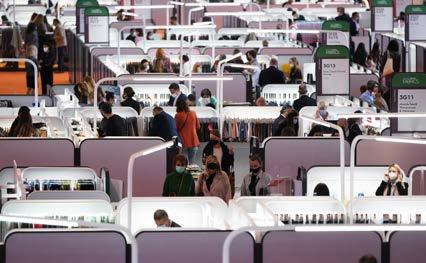
February continues with the two Parisian shows, Texworld Evolution Paris and Première Vision Paris. For the first time, there is some important news, considering that Texworld Evolution, from February 6 to 8, will be featuring only two shows, Apparel Sourcing Paris and Texworld Paris, and not the usual four, because Leatherworld and Avantex will be held only once a year and will be back in July.
From February 7 to 9, it’s time for Première Vision Paris which, at the Parc des Expositions of Villepinte, aims to build on the past successful February shows while waiting for the crucial test in July, following last year’s debut in the new summer version. Blossom is back to being a showcase for the pre-collections: the Carreau du Temple show will be held once a year from now on and will serve as a pull for the PVP February show. 1,220 exhibitors coming from 44 countries are expected in northern Paris: spinners, weavers, tanners, textile designers, accessory and fashion producers, allcarefully selected, as usual, by the show’s French staff.

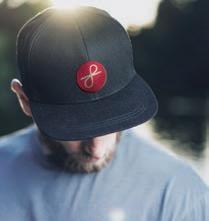
La Spola – Showcase’s tour ends at Filo, held at the MiCo in Milan on February 22 and 23: a full house is expected if the show proves to be as successful as the latest post-Covid ones. The fair’s new formula, including talk shows and focus on new materials and spaces for knitwear, keeps attracting interest and more and more visitors.
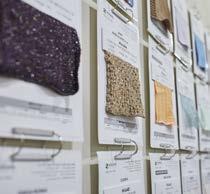
FAIRS 44 La Spola
----







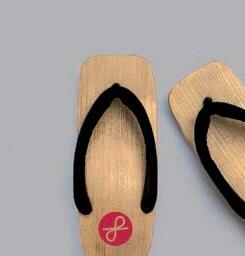






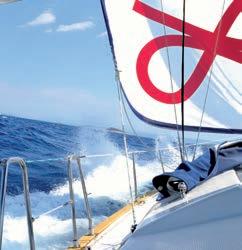

produttori autorizzati Filmar Spa e Cotoni cio Olcese Ferrari Spa loscozia.it loscozia attitude # loscoziatheoriginal the original
The jewel in the crown
FIORI ALL’OCCHIELLO
Filatura Alma has been producing and selling fancy yarns since 1983.

The company’s strengths lie in its teamwork and in ongoing research focused on growth of the business and further increase in the clientele base.
Every season, in fact, the company renews the sample collection, both the spring/summer and fall/winter collections, with the addition of a wide range of yarns mostly designed for
specializes, while it also produces home furnishing and upholstery yarns and knitwear yarns. Filatura Alma is also committed to enlarging its stock service facility and purchasing increasingly advanced machinery, which allow the company to meet the market’s many and varied requests.
The sustainability issue, however, has always been one of the company’s main concerns by being actively committed into
ensuring complete traceability of the supply chain. Which is the reason why the work done with ICEA, the Ethical and
accurate analysis of raw materials and processing, is of great importance for the Tuscan company.
46 La Spola


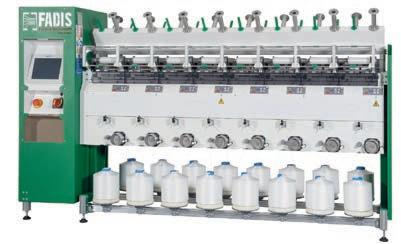

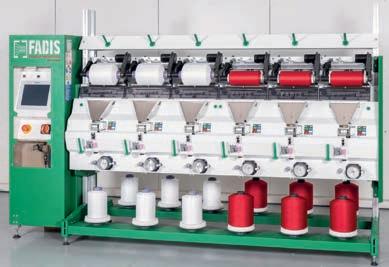
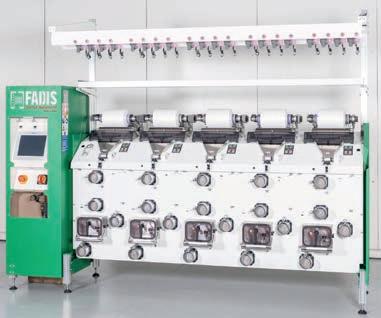
FADIS S.p.A. - ITALY - Via Colombera 70, 21048, Solbiate Arno (VA), Italy - tel: +39 0331 989533 - fax: +39 0331 989532 - email: sales@fadis.it - website: www.fadis.it GREEN CERTIFIED E VO L UZ I ON E & R I VO L U ZI ON E F LESSI BIL I TA ’ & C RE ATI VI TA ’ PRECISION WINDING - ON LINE TENSION CONTROL - ON LINE DENSITYCONTROLOIL I N GGNIFFODCITAMOTUA - NOISICERP GNIDNIW - NO ENIL NOISNET LORTNOC - NO ENIL LORTNOCYTISNEDLIO I N GAUTOMATICDOFFINGROCCHETTATRICE SINCRO SPRINT SINCRO PLUS COMPACT COPSATRICE SINCRO COPSY TESTURIZZATRICE AD ARIA SINCRO MULTIPLA AQUA JET

7 9 FEBRUARY 2023
PARIS NORD - VILLEPINTE
Yesterday, today
A ZETA FA RINASCERE UN NOME STORICO
2022 ended with a rise in sales and a prestigious recognition, 2023 kicked off with a major take-over. For A Zeta Filati, the past two years have been demanding and rewarding at the same time and the first result achieved, as a recognition of the company’s commitment to the local community, is winning the Premio Santo Stefano, the "Stefanino d'Oro" the award announced by the Bishop of Prato Monsignor Giuseppe Nerbini during the Pontifical High Mass on Prato’s Patron Saint’s Day. “It is a yarn producing company which combines the creation of top-quality collections, environmental protection and respect for human beings, by ensuring corporate wellbeing, commitment to training and great creativity” are the reasons behind the award win, which will be given in February to Alessandro Aiazzi. News of the award became official at the end of the year, which marked a growth for the company, even from the structural point of view, and the strengthening of the Mister Joe brand, which introduced, at the Pitti Filati show, a completely renewed collection that was granted further certifications for increasingly sustainable fashion.
New spaces for a company growing more and more and new goals, such as the attendance at trade shows, from Pitti Filati to Filo.
At the beginning of the year, the project of expanding the company’s production capacity by taking over the machinery of a local spinning mill was realized, along with the transfer of all employees to the new company of the A Zeta group, which brought back to the fore, after about ten years, the historic Vison name that still stands out on the plant (in the small box above).


FOCUS 49 La Spola
Fil-3, full speed ahead
NUOVI ARTICOLI, ANCHE PER L’ARREDAMENTO
A new year and new resolutions for Fil-3, which jumps into 2023 with some rethinking on the brands that testify to the company’s sustainability. Certifications and controls are becoming increasingly complex, if not impossible, for those selling reconditioned products, that is, made from many fibers, in many colors and with many different suppliers. Mixed compositions, each different from the next, which require controllers and controlled companies to move about within a maze of microscopes and laboratory machinery: “We have reached the point that we have to provide evidence of payments made by both customers and suppliers, for the purpose of crossing who knows what data”, Giacinto Gelli, the company’s MD, who firmly believes in going down the road of certifications, says. A road that could lead to Belgium: “ We need- Gelli continues- to create our own lobby in Brussels so we can let politicians know what our needs and requests are and also to protect ourselves, otherwise, in the long term, it will be cheaper to burn recycled materials rather than to process them into other products. Prato is Italy’s major textile district for this kind of fabrics, Confindustria Moda has been doing something lately, but it is time to say enough is enough, while it seems that another list of banned dyes is coming our way”.
But 2023 is also expected to be a year of further growth, in terms of both figures and products. In addition to the summer collection, Fil-3 has developed an upholstery item in wool and wool-linen which is particularly suitable for the North European market. But there are also new carded products in natural fibers, such as pure wool or a blend of wool and silk, for the high or medium-high end market. And the trade shows are just behind the corner, starting with Filo, which Fil-3 has always attended, and the Istanbul Yarn Fair, in order to carve out a niche for the company in the not easy Turkish market.
Anno nuovo e scelte nuove per Fil-3, che entra nel 2023 dopo aver rivisto alcune posizioni sui marchi che testimoniano la sostenibilità dell’azienda.
al limite dell’impossibile per chi vende un prodotto fatto fornitori diversi. Composizione miste l’una diversa dall’altra che obbligano controllori e controllati a muoversi in una miriade di labirinti fatti di microscopi e macchinari da laboratorio: “Siamo al punto che ci viene chiesta traccia dei pagamenti tanto dei clienti quanto dei fornitori, non si sa per incrociare quali dati” dice Giacinto Gelli, AD dell’azienda che da anni ha iniziato con convinzione il percorso verso molte Belgio: “C’è bisogno – continua Gelli – che qualcuno crei una lobby tutta nostra a Bruxelles, per far capire ai politici le nostre necessità e le nostre richieste ed anche per
facendo qualcosa ma è davvero il momento di dire basta, mentre pare che si vada verso un’ulteriore lista di coloranti da non usare”.
numeri e prodotti. Accanto alla collezione per l’estivo Fil-3 ha pensato al settore arredamento con un articolo in lana ed in lana-lino particolarmente adatto al mercato del nord naturali come la pura lana o la lana con la seta, il tutto rimanendo su una fascia alta o medio-alta.
Fil-3 è da sempre presente, e dall’Istanbul Yarn Fair, per cercare uno spazio anche nel non facile mercato turco.

50 La Spola
I nostri Servizi
Stock Service
È in grado di offrire una serie infinita di filati naturali o sintetici

Consegna in 12/24h
Di tutti gli articoli presenti sul nostro catologo on-line
Spedizioni
s.r.l. - tessimenti e orditi tinti stock service
22070 CASNATE CON BERNATE (CO)
VIA TICINO, 1/B - TEL. 031 473 021 - FAX 031 6125683 E-Mail: info@totsrl.it www.totsrl.it

rapide in Europa
Garantiamo la spedizione veloce in tutta Europa
t.o.t.

The future is already here
GRUPPO COLLE LAVORA PER UNA “NUOVA” SOSTENIBILITÀ
Has sustainability run its course? No, at least not in its current form, but the future has more modern, precise, detailed rules. And three letters: ESG, that is, Environmental, Social and Governance.
An acronym which Gruppo Colle has been researching into and working on lately, because the commitment to environmental protection, the respect for corporate values and transparency in workplaces have been topical issues for some time now, and because these principles are the road to staying competitive in the market of the future: circularity, safety, low-impact processes, waste minimization are some of the guidelines.
about sustainability and environmental protection and taking concrete action. All Gruppo Colle’s processing stages have been tested, studied and analyzed in a process of ongoing improvement. It is often the commitment of one company that spurs others to do the same, whether suppliers or customers.

Thus, it is necessary to join forces to be stronger together and move in step with what the EU’s regulations require and the markets demand, considering that brands and endcustomers are increasingly attentive to (and consequently demanding of) sustainability: “ As long as the world keeps changing and moving forward, we cannot stay still”, Matteo Gualtieri says. He is a member of the new generation at the helm of the company that is looking to create a sort of companies.
because “ dyeing does not end with dyeing anymore”: Gruppo Colle will have its own tools to ensure sustainability and quality, but also to provide other companies having the same needs with a service, for the purpose of a more closeknit and stronger textile chain.
La sostenibilità ha fatto il suo tempo? No, almeno nelle sue forme più attuali, ma il futuro ha regole più moderne, attente, capillari.
E tre lettere: ESG, ovvero Environmental (ambiente), Social (società) e Governance.
Un acronimo che al Gruppo Colle è già oggetto di lavoro, studio e progettazione perché di impegno ambientale, di rispetto dei valori aziendali e di trasparenza sul luogo di lavoro se ne parla già da tempo, perché è da questi principi che passa la strada per rimanere sul mercato del futuro: circolarità, sicudelle linee guida. ed il fare, ovvero tra il parlare di sostenibilità e di rispetto dell’ambiente ed il mettere in pratica politiche attive: ad oggi tutti i processi di lavorazione del Gruppo Colle sono testati, studiati ed analizzati, anche nell’ottica di un continuo miglioramento.
Un impegno di un singolo soggetto che può diventare lo stimolo per altri, fornitori o clienti che siano. Quindi fare aggregazione per essere più forti e per stare in linea con quello che chiede l’Europa, dal punto di vista normativo, e tutto il mondo per quanto riguarda i mercati, visto che da conseguenza pretese) verso la sostenibilità: “il mondo cambia e va avanti, non ci si può fermare” dice Matteo Gualtieri, nuova generazione di un’azienda che guarda alla formazione di una sorta di hub che si occupi della tematica, anche a servizio di altre realtà industriali.
Uno dei primi passi sarà la nascita di un laboratorio di anaGruppo Colle avrà in casa gli strumenti per garantire sostenialtre imprese che abbiano bisogno simili, sempre in un quadro
53 La Spola
New frontiers
LA TECNOLOGIA DI SHIMA SEIKI A PITTI
Pitti Filati is the must-see show for learning about Shima Seiki Italia’s latest technical and stylistic developments: a showcase which, twice a year, “draws brands and customers to view our machinery and samples”, Managing Director Davide Barbieri says. Shima Seiki’s activities are focused on new technologies and applications to help companies in the clothing industry by guiding them towards new frontiers. “ We strive to be at the forefront by offering innovative knitwear- Barbieri explains- for the purpose of inspiring brands to always go beyond the ordinary”. Shima Seiki Italia’s collection, designed by Vittorio Branchizio, finds its natural pairing with Beste Hub, by developing some of the collection’s garments and experimenting together with the creation of paper patterns and packaging.
“We worked side by side on the development of some of the new collection’s iconic pieces, in an ongoing exchange between a company which excels at the production of fabrics, and much more, and Shima Seiki Italia, a huge influence and source of inspiration to me. An exchange which brought me to combine fabric processing with knitwear processing”, Vittorio Branchizio says. This show’s collection expresses the authenticity of raw materials and luxury, from yarns to finished garments.

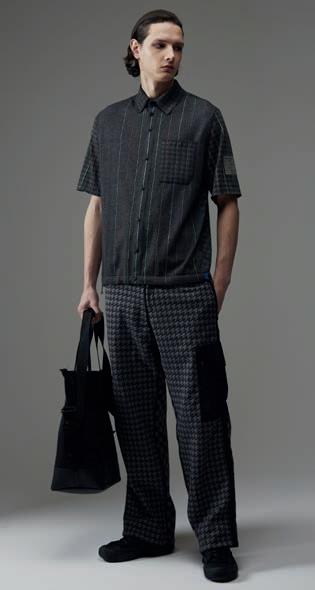
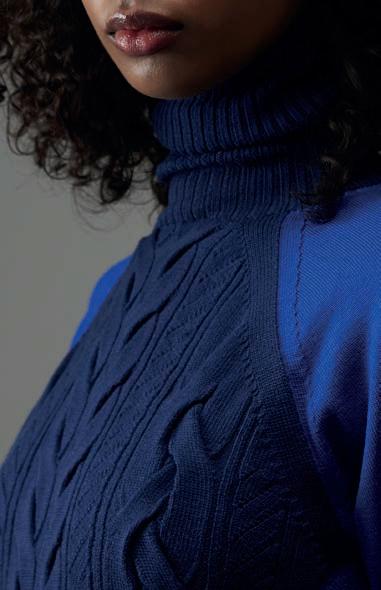
Shima Seiki Italia welcomes four companies within its exhibition space, in order to place a value on knitwear from all points of view. The goal is to provide customers with various services. At the show, the company will also introduce two new WholeGarment™ technology machines, for the production of seamless garments, the SWG154 XR 15L and the NSVR 183 21G.
In 2022, Shima Seiki Italia hired a number of new-generation programmers, and more hiring is expected in the future. Shima Seiki Italia is increasingly committed to shaping the present for the knitwear industry and 2023 is expected to be a critical year for the company, including the attendance to the world’s major trade show in the field, ITMA, in Milan from June 8 to 14.
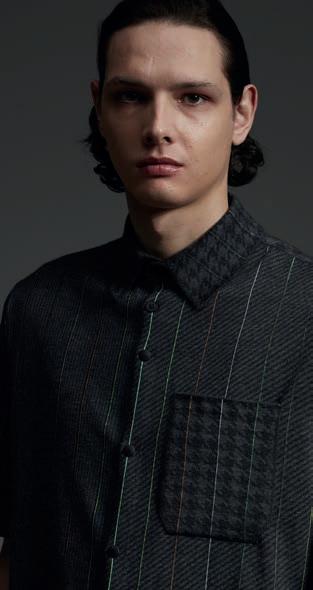
54 La Spola
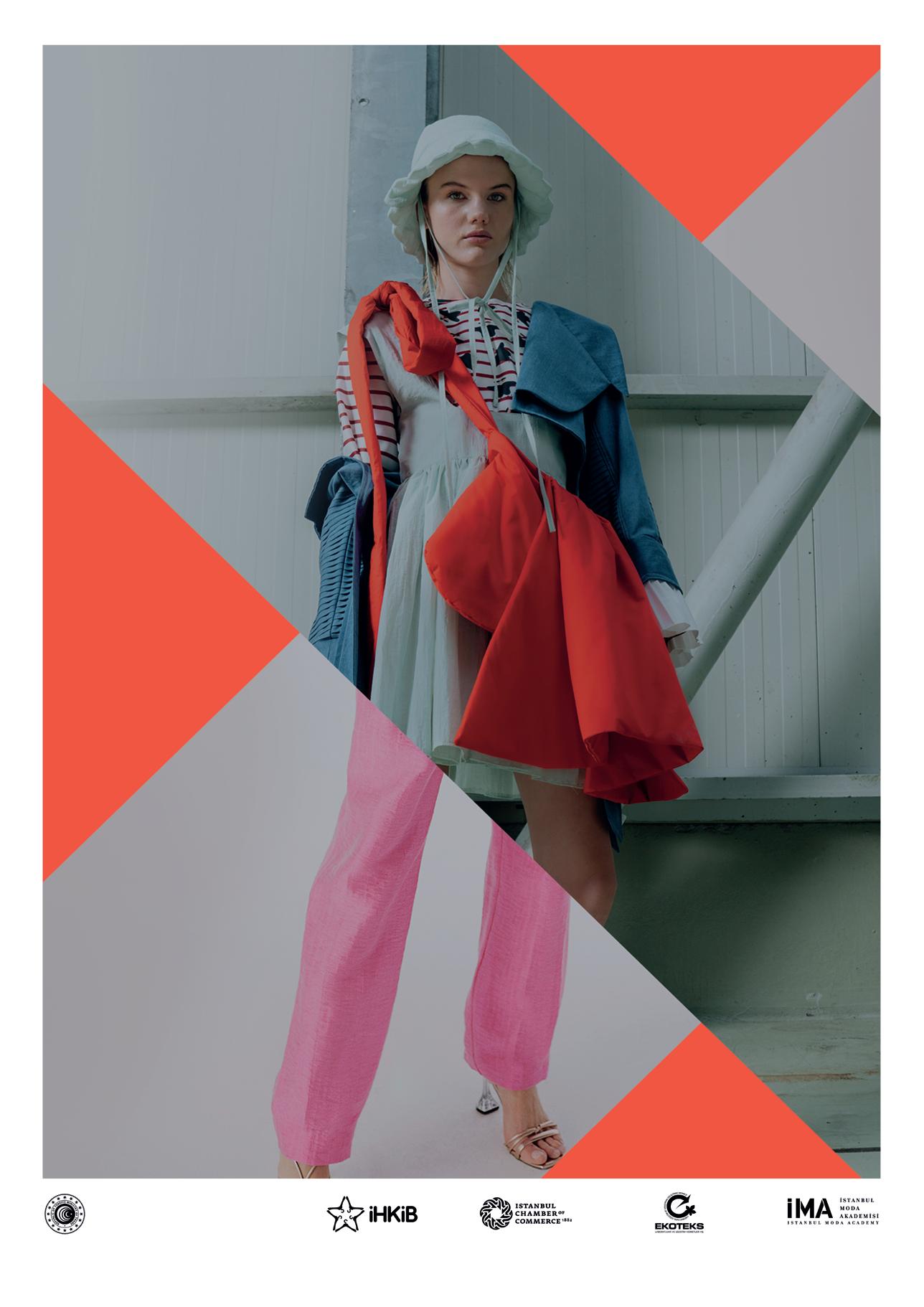

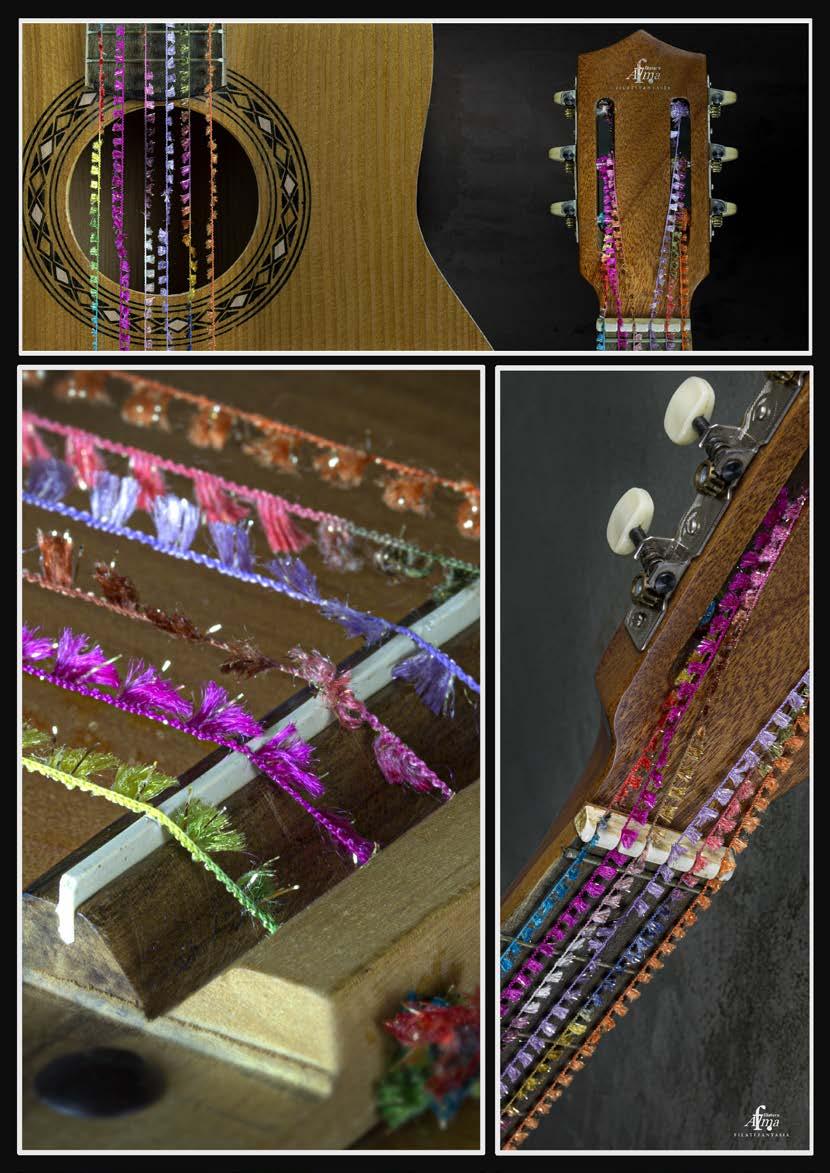
On the customer’s side
LA LUNGA TRADIZIONE DI OFFICINE GORGERI

2023 anno da segnare sul calendario per Officine Gorgeri, che celebra i 70 anni dell’azienda, fondata nel 1953 da Aldo Gorgeri e da allora sempre presente e attiva sul mercato delle macchine per il cardato prima e della progettazione e della costruzione di macchine e impianti per l'apertura e la miscelazione delle fibre poi.
Quasi tre quarti di secolo di successi sui mercati nazionale e internazionale grazie alla tecnologia affidabile e alla capacità di trovare una soluzione anche a problemi molto difficili, seguendo richieste ed indicazioni dei clienti. Nel 1994 Aldo Gorgeri, affiancato dai figli, ha trasformato la ditta in Officine Gorgeri srl con una maggiore vocazione all’internazionalizzazione, con tecnologie affidabili che hanno aiutato a fidelizzare i clienti.
Gli apriballe per l'apertura fine delle fibre possono aprire tutti i tipi di fibre, da quelle sintetiche a quelle naturali; la gamma comprende una macchina per l'apertura iniziale per tutti i tipi di fibre e un apriballe per la cardatura di una fibra bicomponente.
Negli ultimi anni, l'azienda ha intensificato gli investimenti nella progettazione e nel continuo ammodernamento delle macchine utensili, in modo da poter offrire prodotti affidabili e duraturi che soddisfino la domanda dei clienti. Il tutto con un’evoluzione costante, anche verso il riciclo delle materie prime e la lavorazione di fibre naturali come il legno, la canapa ed il lino.
L'80% dei clienti delle Officine Gorgeri opera nel settore geotessile e produce tessuti non tessuti leggeri e pesanti applicati per separare, filtrare, rinforzare, proteggere e drenare l'oggetto da trattare.
Ad oggi Officine Gorgeri ha una vasta copertura del mercato internazionale, con clienti sia in Europa, compreso l’Est (Repubblica Ceca, Lituania, Slovenia e Polonia), che fuori dal continente ( Turchia, U.S.A., Canada, Sud America e Sud Africa.

57 La Spola
---
The Famas orbit
L'ORBITA FAMAS
The world around us is changing at a fast pace, but there is something that will always be central to the industry
human relations as much as on top-quality production. This philosophy led Famas to create a healthy and sustainable working environment, in which every single person, whether employee, customer or supplier, feels at ease in an atmosphere of respect, helpfulness and attention to personal values.
The generational transition has brought Annalisa and Alessandra Fava, who have been working within the company for over twenty years, to play an increasingly leading role in the management process. They will ensure that company’s mission is carried out: remaining committed to keeping up
with the company’s orbit, by understanding the importance of making the people, who are at the core of the business, always feel valued.
Famas’ goal is to ensure that they deliver consistently
Il mondo che ci circonda si sta evolvendo a ritmi serrati, ma un fattore rimarrà centrale nel mondo dell’industria, le persone.
Famas, in mezzo secolo di esperienza, ha compreso che il fondamento del successo di un’impresa è tanto nelle relazioni umane quanto in una produzione di qualità.
persone un ambiente di lavoro sano e sostenibile, in cui tutti gli attori, siano essi dipendenti, clienti o fornitori, possano sentirsi a proprio agio in una realtà di rispetto, disponibilità e attenzione al valore personale.
know-how to an assistance service aimed at engaging in a constant dialogue with customers and suppliers who are very important, too.
The attention to values has always been at the core of the bond between the company’s identity and the brand and will keep being Famas’ distinguishing feature for many years to come.
anni in azienda, di Annalisa e Alessandra Fava ricoprire un porteranno avanti la mission aziendale: mantenere la simbiosi tra produzione di eccellenza nel settore tessile tecnico e valorizzare la comunità nell’orbita aziendale, comprendendo l’importanza di far sentire sempre e semplicemente apprezzate le persone che sono di fatto il cuore dell’azienda. L’obiettivo di Famas è la costruzione di un valore che gira attorno a un prodotto che per necessità deve essere privo di difetti per tutta la lunghezza del tessuto, partendo dalla realizzazione per mano di personale proveniente da un territorio notoriamente riconosciuto per il suo know how impeccabile e di un servizio di assistenza diretto a mantenere un dialogo costante con i clienti, ma anche con i fornitori, fondamentali.
L’attenzione ai propri valori ha contraddistinto da sempre il legame tra l’identità dell’azienda ed il marchio e continuerà a caratterizzare l’azienda per gli anni a venire.
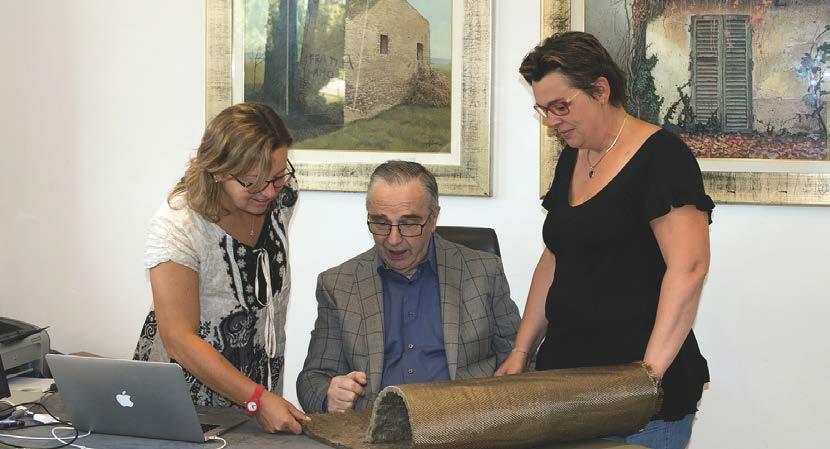
58 La Spola
Alfredo Fava con le figlie, Annalisa e Alessandra
alla mostr a internazionale di tecnologia per il tessile e abbigliamento più importante al mondo
Fonte da circa 1,570 produttori principali e vedi macchinari dal vivo dimostrazioni
Collaborare e far crescere la tua attività con trasformazione digitale e sostenibilità
Registra ora la tua visita!
A prova di futuro
La tua attività con soluzioni migliori della classe per stare al passo con la concorrenza
Accedi a ITMAconnect – Hub di approvvigionamento e comunità tessile globale disponibile tutto l’anno








Scansiona il codice QR per scoprire perché dovresti visitare ITMA.

Fiera
ACIMIT
AMEC
BTMA
GTM
(Italia)
AMTEX
(Regno
(Olanda)
SWISSMEM
(Spagna)
Unito)
(Svizzera)
SYMATEX

TMAS
UCMTF
(Belgio)
(Svezia)

(Francia)
(Germania)
Della
Proprietario
Fiera Associazioni CEMATEX
Organizzatore Della
T: +65 6849 9368 E: info@itma.com
Con Noi @ ITMA2023
VDMA ulteriori informazioni
Connettiti
Scansionare
Le aziende, le collaborazioni per un business a prova di futuro
FEEL
of ITEMA TECHNOLOGY
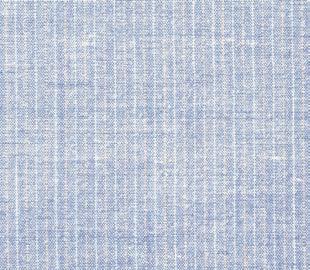
È la tecnologia che ha prodotto il tuo tessuto che rende il tuo prodotto così speciale.
Le macchine per la tessitura Itema garantiscono ai tessitori di tutto il mondo la tecnologia più innovativa in linea con i più recenti trend di mercato: prestazioni superiori, eco-efficienza e maestria tessile sono i valori aggiunti che puoi toccare con mano quando scegli Itema.

THE
VALUE SCOPRI DI PIÙ Textile Machinery itemagroup.com Industrial Innovation and Solutions H6 - B105 Vieni a trovarci Milano 8-14 Giugno 2023
Scopri il valore aggiunto della tecnologia Itema
ADDED
Tradition and innovation

RIFINIZIONE VIGNALI: TRADIZIONE E INNOVAZIONE
For many years, Rifinizione Vignali has been a name associated with quality and innovation in the field of textile finishing, because of the wide range of state-of-the-art treatments it offers. Quality service has been the company’s strength for 72 years, along with the Vignali family’s uninterrupted ownership of the company. Rifinizione Vignali, in fact, began operating back in 1947, when Silvio Vignali took his first steps as entrepreneur by teaselling blankets. The years 1954-55, with Silvio’s son Ivo joining the company, marked a great turning point in the business. Rifinizione Vignali changed and expanded its production range and processing methods with a view to further industrial development. Ivo is the current president of the board of directors and the third-generation members of the family, Barbara and Silvia, have joined the company too.
Over the years, in addition to new finishing treatments of fine and innovative fabrics, in par-ticular, upholstery fabrics which had not been produced in the Prato area until then, the company became highly specialized in the finishing of acrylic carpets and faux fur coats. In more recent times, Rifinizione Vignali also specialized in the finishing of velvets and fur-nishing fabrics. In the sixties, the company believed it was time to upgrade the entire machinery fleet and, in 1973, a new dyeing mill, Ma-Vi, was started, adding to the one operating within Rifinizione Vignali.
Then the company further expanded its activity, soon becoming well-known not only in the Prato area, but also across the country and abroad. Today, the company can count on a base of regular customers who continue to trust Vignali’s experience and rely on its inno-vative solutions. At present, Rifinizione Vignali, together with Tintoria MA-VI, employs about 100 people and is increasingly committed to research on new technologies and improve-ment of processing and service quality, with an eye to sustainability of production processes.
FOCUS 61 La Spola
---
All for one
TESSITURA ITALIA, UN FUTURO DA GRANDE AZIENDA
The concept of joining forces can apply to the entire textile chain as well as to a single unit. Such is the case of the Tessitura Italia companies, Filo d’Oro and Italia 2.0, which, within 2023, will merge into one.

The news was announced by Sole Director Andrea Borelli, who decided to merge the three companies, which have always been interconnected with each other but administratively separate, into one.
It is however, a decision which goes beyond the mere bureaucratic process involved: it is a simplification and an improvement of working conditions for the whole workforce.
In the first case, the merger helps to lower management costs because of the development of an economy of scale that involves a reduction of costs and optimizes the resources. In the second case, the merger results in new contract for about 50 workers, including more guarantees and more protection, in terms of both wages and welfare, from leave to contributions.
The company’s name is going to be Tessitura Italia, which can rely on 98 machines split between four production units: “We are restructuring the company- Borelli explains- while making it bigger at the same time, in order to reintroduce ourselves to the market in a different form. We will be able to build partnerships with companies which specialize in processing stages that precede or follow ours, such as spinning mills and mending centers, with which we might even consider exchanging company shares in order to expand our range of allied industries. It is a way of joining forces based on facts, not wishful thinking”.
The principle may extend not only to Prato-based companies, but to any other area as well: “As soon as we have all the certifications required- the entrepreneur concludes- this is our next step towards making Tessitura Italia a sounder company. The process is under way and we plan to complete it within next summer”.
62 La Spola
Il concetto di fare squadra, prima di arrivare ad una intera
Via Martiri di Cefalonia, 6 | 20054 - Segrate (MI) Tel
02-216621 | Fax (+39) 02-2139410 info@shimaseiki.eu
(+39)
Cherchez la crêpe
A TAVOLA CON UN PIATTO TIPICO FRANCESE
by La Spola
In some cases, they have the same shape, in others they share the center role they play in the local cuisine, at times they have absolutely nothing in common, neither the taste nor the look.
We are talking about crêpes, either sweet or savory, very commonly consumed in Paris by locals and tourists alike, less popular and somewhat of a “niche” dish in Milan and Florence, but by no means impossible to find.
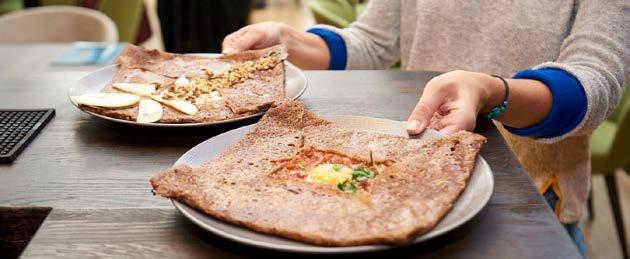
So for once, La Spola – Showcase gives the head start to Paris in this imaginary “food competition” but, as the world is the same wherever you go, you will have no trouble finding excellent pizza, barbecued meat and even crêpes where you least expect it.
Our culinary tour starts, as usual, in Florence, the city that opens the season of trade shows, where our magazine is distributed free of charge. In Tuscany, it is easier to find sweet crêpes, at ice-cream and pastry shops, and Florence proves to be no exception, so follow your sense of smell and taste buds to the nearest gelateria. And don’t’ ask for crepes alla fiorentina, also known as crespelle, because you will be served a dish of pasta. On Borgo degli Albizi, at 87 rosso, there is La Milkeria, where crêpes are not street food, but a veritable work of craftsmanship made, as the venue’s motto puts it, “like in the good old days”. About fifteen different crêpes on the menu, all sweet and with Nutella as the star filling, as well as pancakes, piadina, bagels, waffles and toasted sandwiches. Instead Superfox (27/R Via della Vigna Vecchia), just steps away from the Bargello Museum, offers the savory version and customers can choose from a selection of crêpes filled with cheese or various kinds of cold cuts, in a small but welcoming space, open also to those looking for salads, frittate or simply drinks. Last but not least Barroccino (71 Via della Torre degli Agli ), in the Novoli area: crêpes here are made only with a mixture of fresh eggs and served with jam, custard, cheese, soft fruit, crushed pistachios, zabaione, dark
In alcuni casi sono accumunate dalla forma, in altre dall’importanza che hanno per la cucina locale, altre volte invece non hanno proprio niente a che vedere tra di loro, né per sapore né per aspetto.
Sono le crepes, salate o dolci, piatto decisamente abituale per chi si trova invece è a Milano o a Firenze, dove questo piatto è più “di nicchia” ma non per questo introvabile.
Per una volta La Spola – Showcase concede quindi a Parigi un certo vantaggio in questa immaginaria “corsa a tavola” ma ormai tutto il mondo è paese e, come dimostrano pizza o carne alla brace, si possono trovare eccellenze dove meno te l’aspetti.
In ogni caso la nostra rassegna di consigli si apre, come di consueto, la nostra rivista è presente in distribuzione gratuita. In Toscana è più consueto trovare crepes dolci, in locali dove c’è un naturale abbinamento con il gelato o la pasticceria. A Firenze questo cliché non cambia e per gustare una crepe bisogna seguire occhi e olfatto in cerca di una
le crespelle, che di solito sono servite come primo piatto. In Borgo degli Albizi, all’87 rosso, c’è La Milkeria, dove la crepe non è un piatto “di passaggio” ma una vera e propria opera di artigianato fatta, come da motto del locale, “come una volta”. Una quindicina le crepes in menù, tutte dolci e con la Nutella ovvia protagonista: in alternativa Superfox (via della Vigna Vecchia 27/R), a due passi dal Museo del Bargello, percorre invece la strada del salato, mettendo a disposizione dei clienti una scelta tra crepesgliente con spazio anche chi ama insalate, frittate o un semplice drink.
Barroccino (via della Torre degli Agli 71, zona Novoli): le crepes sono preparate con un impasto di sole uova fresche, marmellate,
CITIES 64 La Spola
Creperie Paris Breizh Daumesnil - Paris
chocolate and nut chocolate spread. French influence is definitely more noticeable in Milan and the range of choice is wider. Our first suggestion is Magolosa (7 Piazzale Tripoli), whose food offerings are unusual, to say the least: crêpes, ice cream and wine. Crêpes are both sweet and savory, even paired with platters of cold cuts. And as a tribute to the venue’s name, the crêpes on the menu ( seventeen, both sweet and savory) are called “Merlino”, “Gandalf”, “Houdini” and other wizard and magician names, whether real or legendary. Maison Bretonne (69 Via Procaccini) is located in an area full of restaurants, a corner of France in Milan, with a menu that looks like it came straight out of a French restaurant: in addition to sweet crêpes, croques, Galettes de Sarrasin and tartare. Gelacreperia (9 Ripa di Porta Ticinese) is in the Navigli area and has been making Milan’s most popular crêpes for over ten years. They are served both sweet and savory and cut into small lozenges which make them quite original and unique. The restaurant is small, but it has outdoor seating overlooking the Navigli. Biancolatte (30 Via Turati) is a mix of pastry shop and toy store. Customers, in fact, are greeted by a dozen stuffed toys scattered across the dining room. The menu features six different crêpes, all sweet and one version served with a drizzle of Grand Marnier on top. Latteneve, also located in the Navigli area (27 Via Vigevano), in addition to ice cream, the house specialty, offers crêpes, even in the vegan variant.
And here we are in Paris, where the choice is endless and it is basically impossible to say which is the best crêperie: it depends on personal taste and preferences and even on the creativity of who makes them on one day rather than on another. So what makes the difference is the ambience. Of course, you cannot leave Paris without tasting the most typical crêpe of all, the crêpe suzette, filled with orange-flavored butter and flambéed with Grand Marnier: it was created in 1903 by French
creme, formaggi, frutti di bosco, granelle di pistachio , crema zabaione, cioccolato fondente e nocciolata.
A Milanopia. Un primo assaggio potrebbe essere Magolosa (piazzale Tripoli 7), dove il tris di proposte gastronomico è quantomeno insolito: crepes, gelato e vino. Le crepes sono dolci e salate, anche in accompagnamento a tra dolci e salate) sono in menu come “Merlino”, “Gandalf”, Houdini” e altri grandi maghi, veri o leggendari. Zona ricca di locali quella in cui si trova Maison Bretonne (via Procaccini 69), un angolo di Francia a Milano, con tanto di lista dei piatti che sembra arrivare direttamente dal lungo Senna: oltre alle crepes dolci ci sono le croques, le Galettes de Sarrasin e la tartare. Gelacreperia (Ripa di Porta Ticinese 9) è la porta dolce sui Navigli e probabilmente sforna le crepes più famose di Milano da oltre dieci anni. Sono servite sia dolci che salate e con un taglio a piccoli rombi che le rende originali e uniche. Il locale è Biancolatte (via Turati 30), un mix tra pasticceria e negozio di giocattoli. vari angoli della stanza. Sei le crepe proposte, tutte dolci, una delle quali Latteneve, anche questa sui Navigli (via Vigevano 27): oltre alla gelateria, specialità della casa, non mancano le crepes, anche in versione vegana. Ed arriviamo a Parigi impossibile dire quale creperie sia migliore di un’altra: dipende dai gusti, dalle preferenze e, magari, anche dalla fantasia di chi le prepara in un può essere l’ambiente. Di certo non si può presindere dalla più tipica,


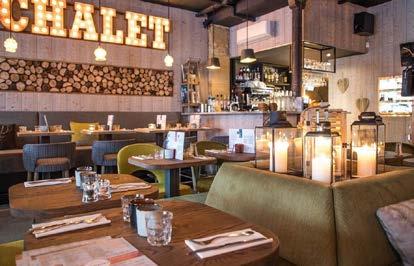
65 La Spola
Barroccino - Florence
Le chalet du 8ème - Paris
Le chalet du 8ème - Paris
cook Escoffier and it was considered back then to be a haute cuisine dessert. At 15 Rue des trois frères is the picturesque Creperie Broceliande, which offers a typical Breton menu with many crêpe versions, both sweet and savory. Considering the location, the price is reasonable. Crêperie Paris Breizh Daumesnil (177 Avenue Daumesnil ) is the opposite as far as the ambience is concerned: modern, sophisticated and large, thus, perfect for big groups. Crêpes are homemade and based on an organic and gluten-free recipe. Situated near 177 Avenue Daumesnil is Crêperie L'Atelier Artisan Crêpier (3 Rue du Commandant Rivière), most likely on the top ten Parisian list of any reviewer. The menu is rather sophisticated and the crêpe fillings are quite uncommon: caramelflavored, with salted butter, candied apples and Crème Chantilly. Prices are consistent with the restaurant’s very central location. And if it’s very cold outside on the trade show days, you can retreat to a mountain hut in downtown Paris, between the Élysée Palace and Place de la Concorde. Le Chalet du 8ème (8 Rue du Commandant Rivière), in fact, looks like an alpine chalet, with wooden furniture and couch seating at the tables. The crêpes are obviously both sweet and savory. Our last stop in Paris is a crêperie that La Spola tested for you: Crêperie des Arts (27 Rue Saint-André des Arts). Despite being in a very touristy area, this venue stands out for the quality of food and the ambience: small-sized, well-kept, eccentrically furnished and full of sculptures, quick service and square-shaped crêpes made with a dark-colored mixture. And the prices are way below Parisian average.
all'epoca era ritenuta un dessert di lusso. Al 15 di rue des trois frères (siamo a Montmartre, a proposito di ambiente), c’è la caratteristica Creperie Broceliande: anche in questo caso è la Bretagna a dettare il gusto, con un menu ricco di varianti, sia dolci che salate. Considerata la posizione il prezzo è contenuto. La Crêperie Paris Breizh Daumesnil (177 Avenue Daumespazioso, quindi perfetto anche per comitive più numerose. Le crepes sono fatte in casa con una ricetta bio e senza glutine. Vicina agli Champs-Élisées è la Crêperie L'Atelier Artisan Crêpier (3, Rue du Commandant Rivière), probabilmente nella top ten parigina per ogni tipo di recensore. Il menu è piuttosto ricercato e gli ingredienti per farcire le crepes escono dai canoni più classici: per esempio ce ne sono al caramello, burro salato maison, mele caramellizzate e chantilly. Il prezzo è consono alla

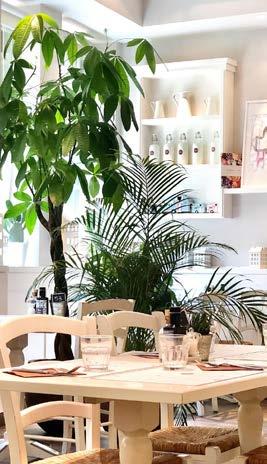
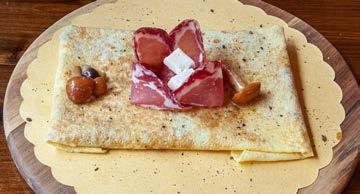
freddo la fa da padrone c’è addirittura la possibilità di rifugiarsi in uno chalet alpino aperto nel cuore della città , tra l’Eliseo e Place de la Concorde. Le Chalet du 8ème (8, rue du Commandant Rivière) sembra infatti un rifugio di montagna, con gli arredi in legno ed i divanetti intorno ai tavoli. Le crepes sono ovviamente servite sia dolci che salate. Chiusura a Parigi con un locale testato da La Spola: Creperie des Arts (27 Rue Saint-André des Arts). Non inganni la posizione molto turistica: questo locale spicca per la qualità dei piatti e l’ambiente, piccolo, curato, dalle forme un po’ stravaganti e pieno di sculture. Rapido il servizio, crepes presentate in forma quadrata e realizzate con impasto scuro. Ed il prezzo è inferiore alla media parigina.
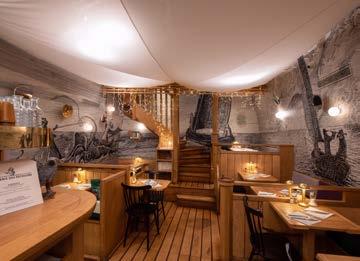
CITIES 66 La Spola
Biancolatte - Milan Magolosa - Milan
Creperie des Arts - Paris
La crepe è stata creata nel 1903 dal cuoco francese Escoffier ed era considerata un dessert di lusso

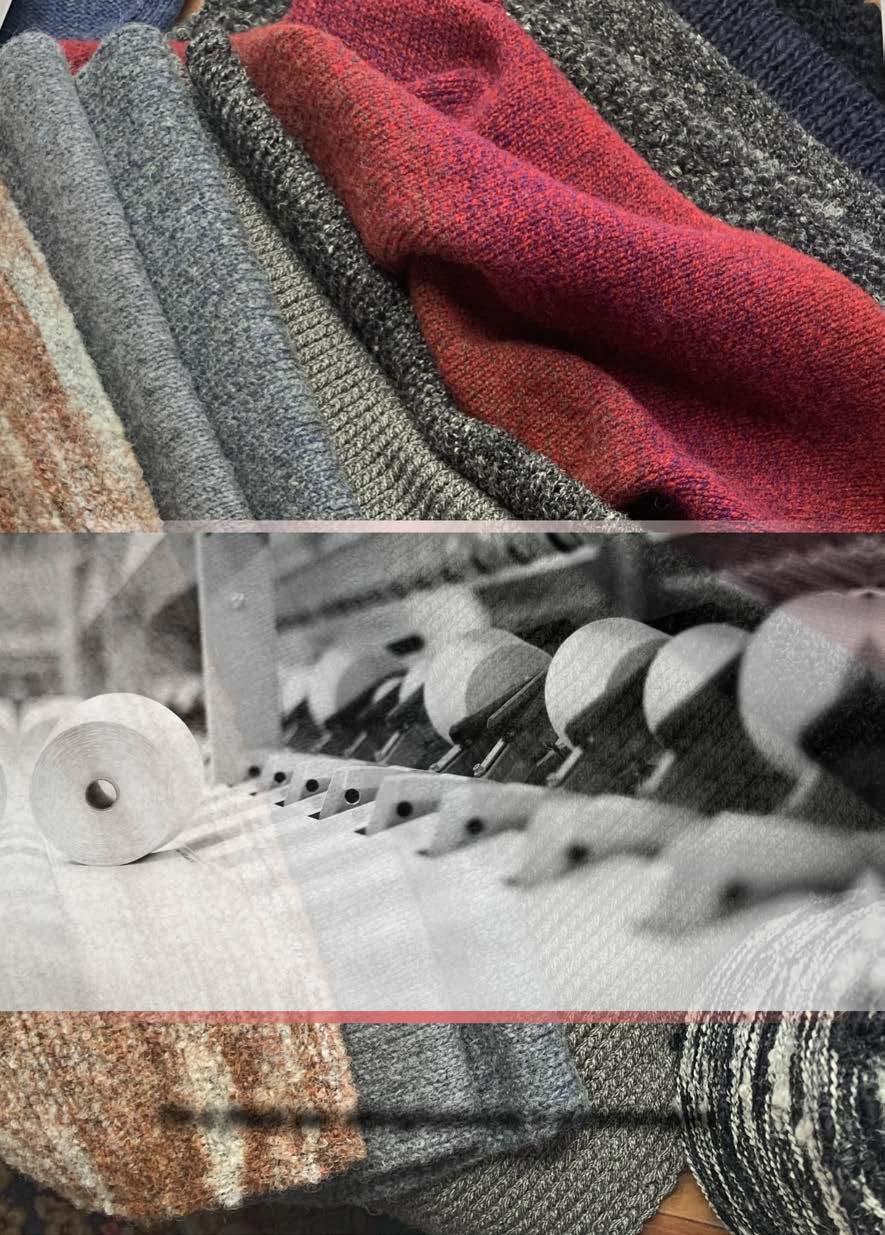

















 ERCOLE BOTTO POALA PORTA IL TESSILE AL VERTICE DI CONFINDUSTRIA MODA
by Matteo Grazzini
ERCOLE BOTTO POALA PORTA IL TESSILE AL VERTICE DI CONFINDUSTRIA MODA
by Matteo Grazzini



 ph. Dario Garofalo
ph. Dario Garofalo
 by redazione La Spola
by redazione La Spola



























































































 ph. Dario Garofalo
ph. Dario Garofalo
 by Matteo Grazzini
by Matteo Grazzini











 Alessio Berto
Alessio Berto




 Milano Unica
Milano Unica



































































